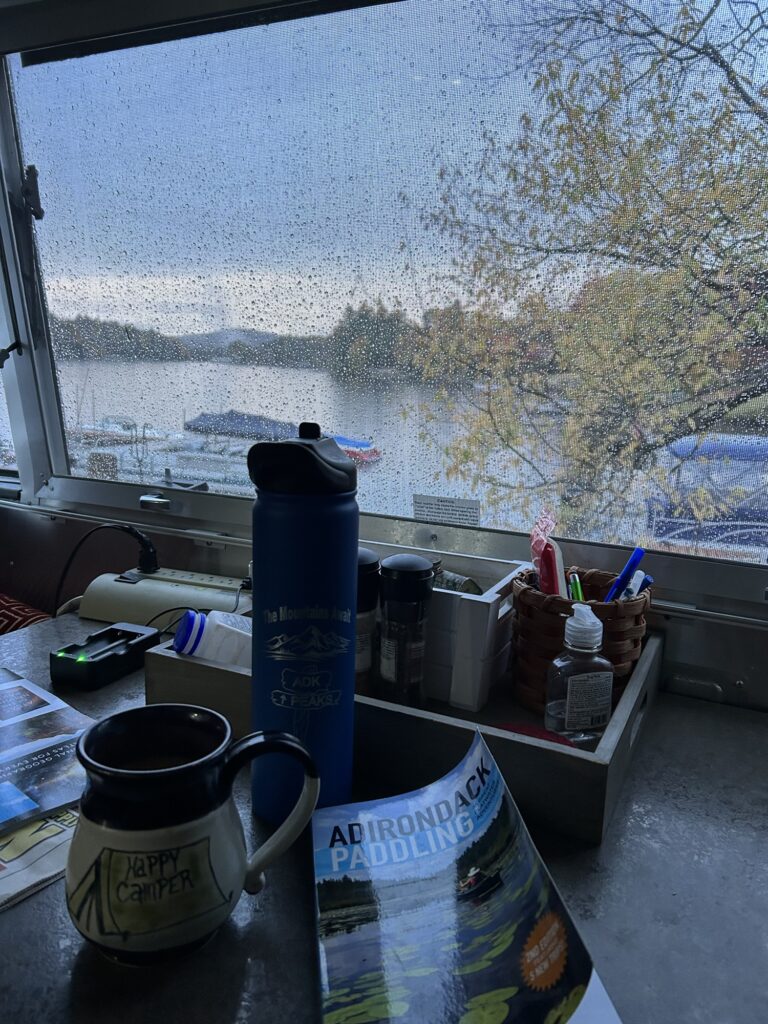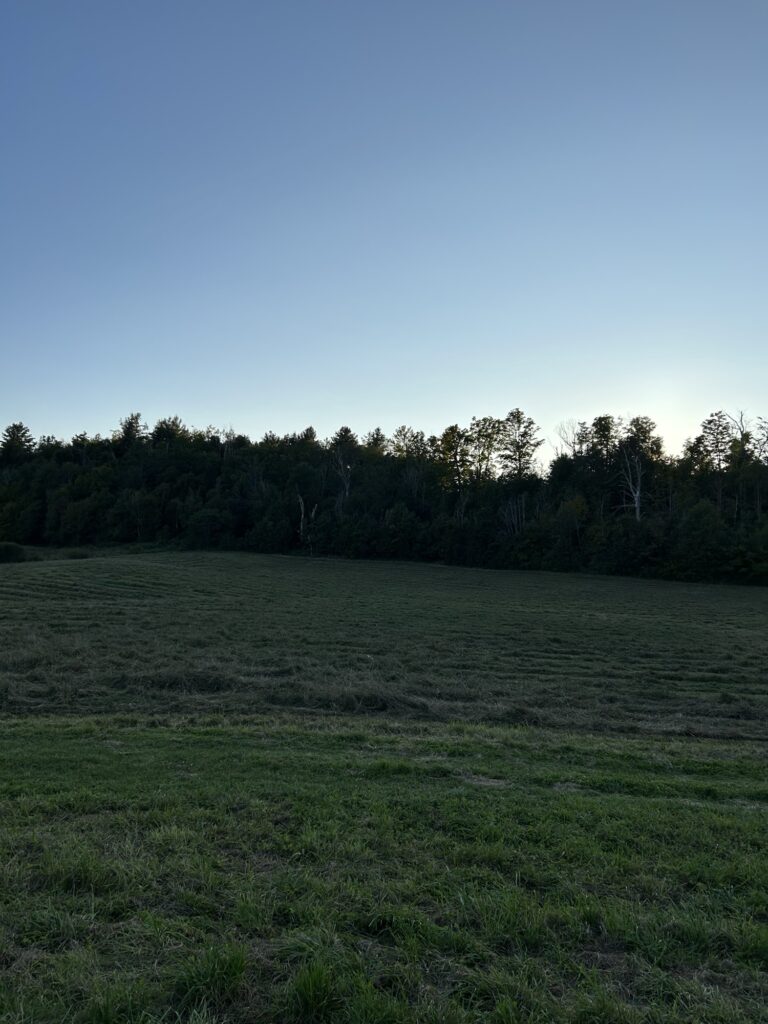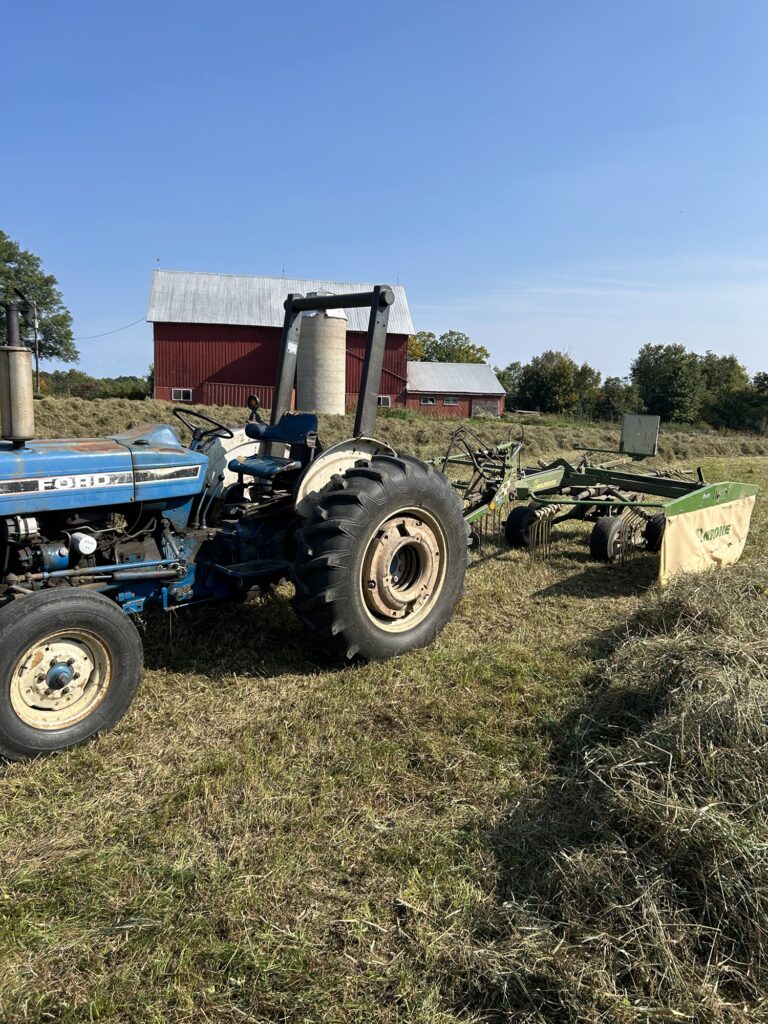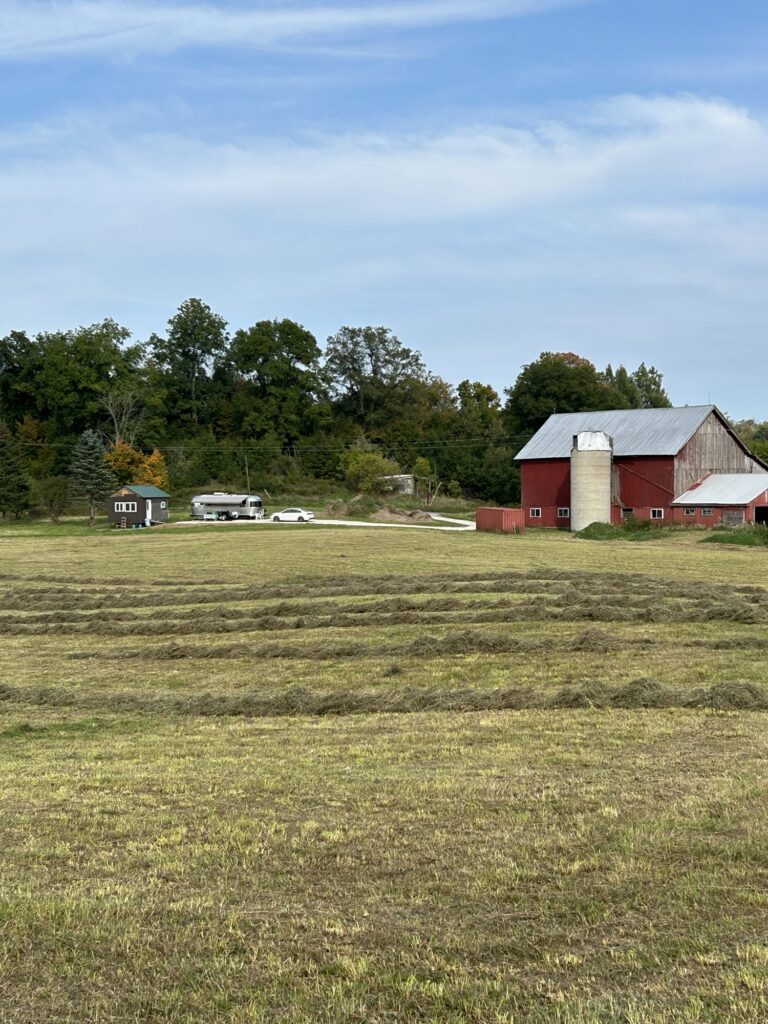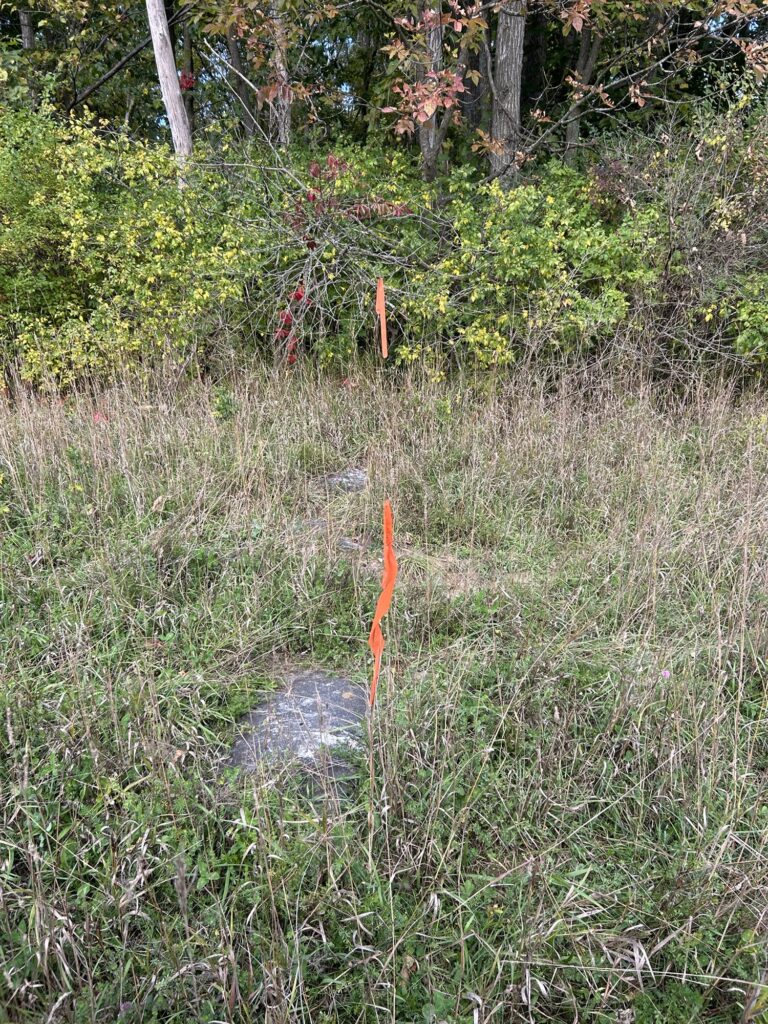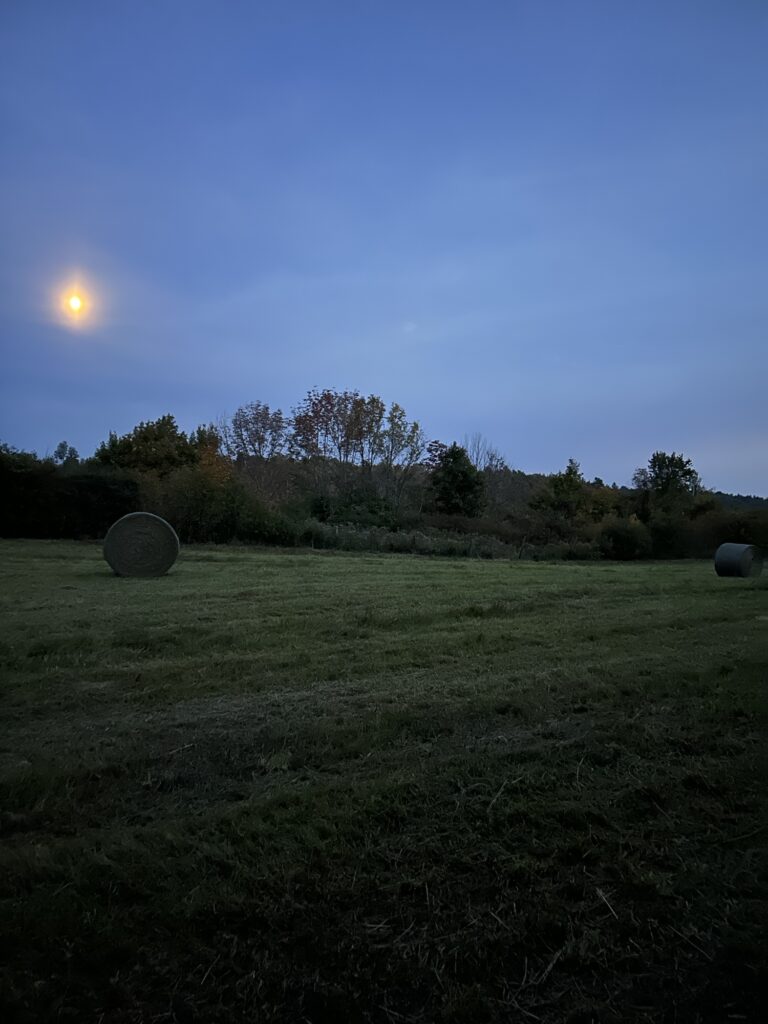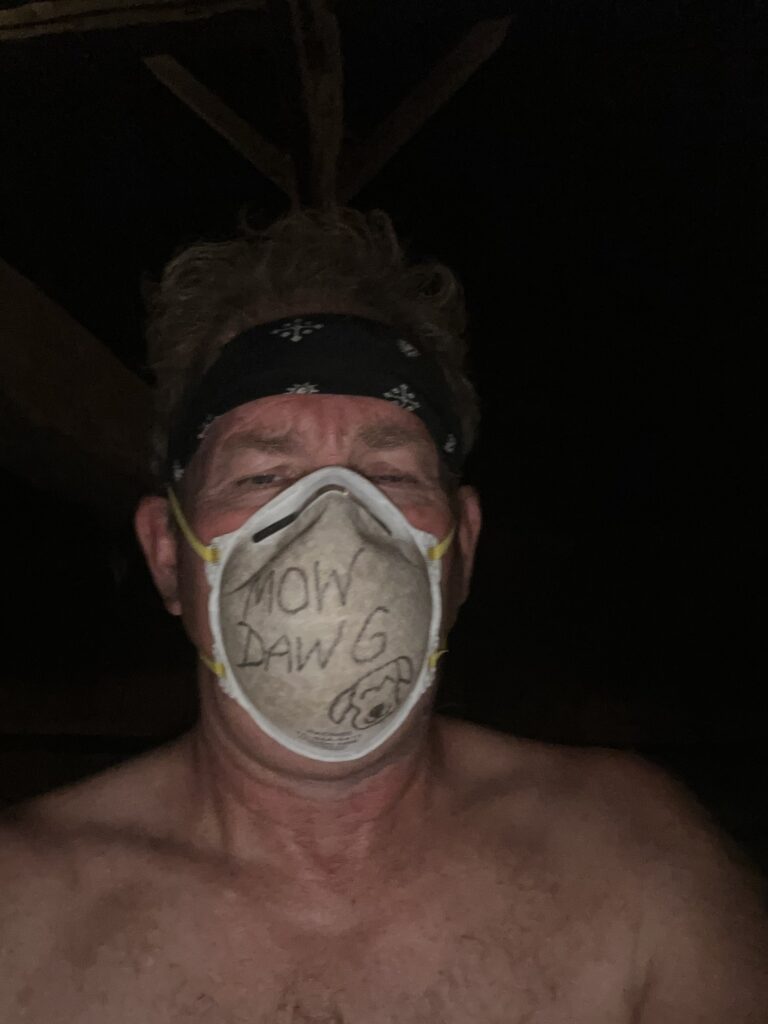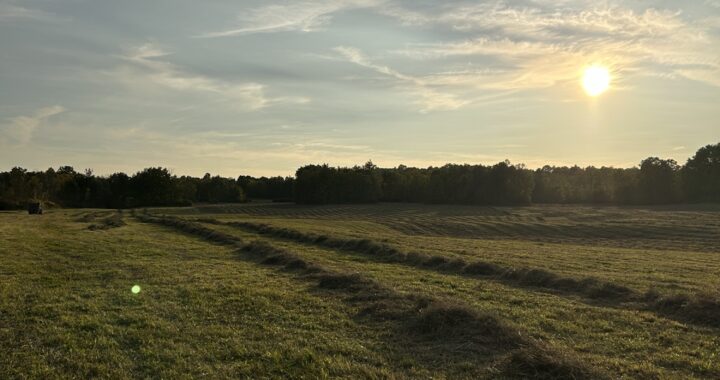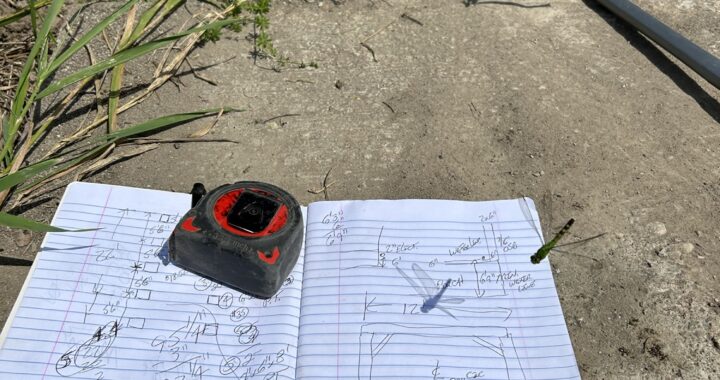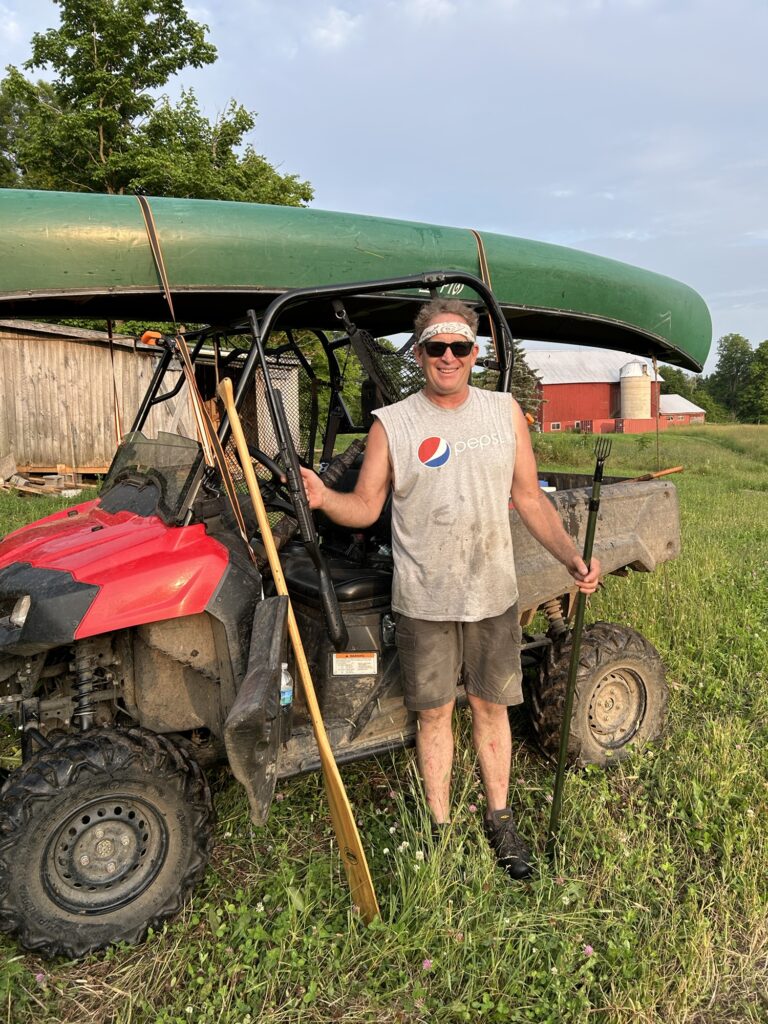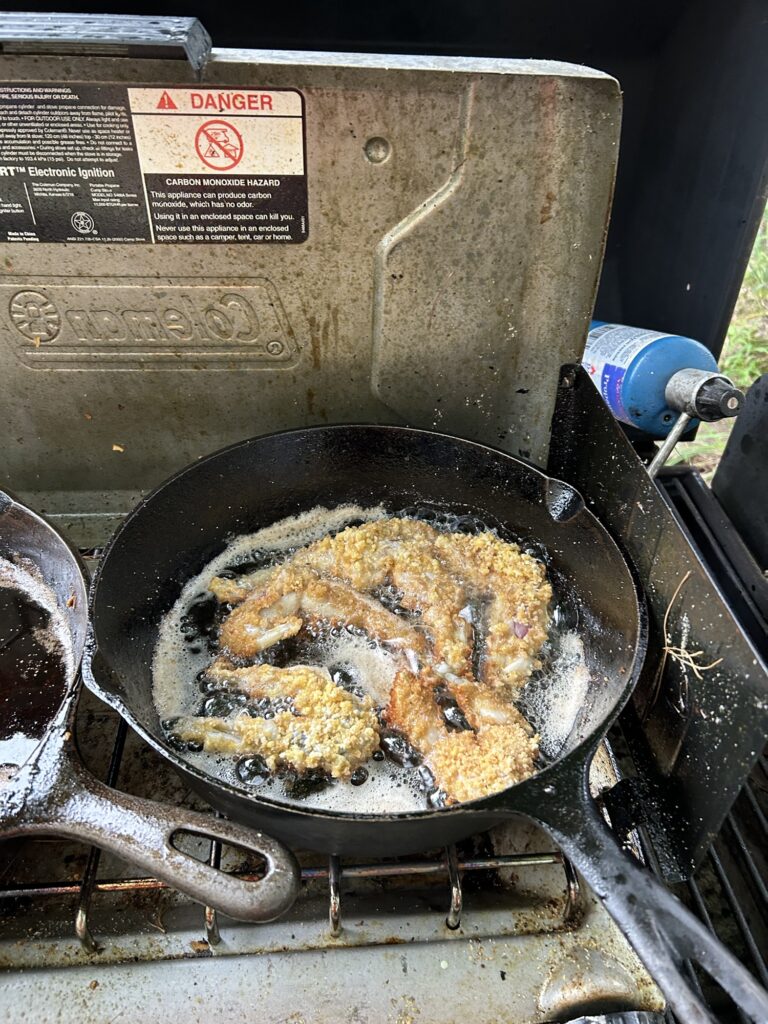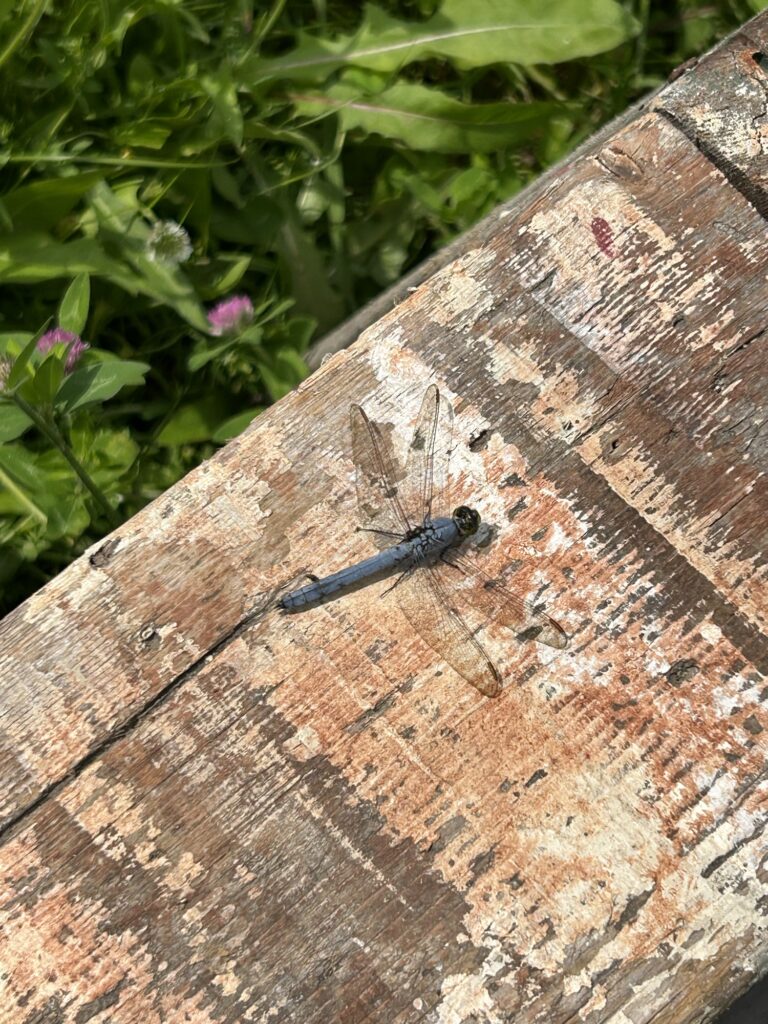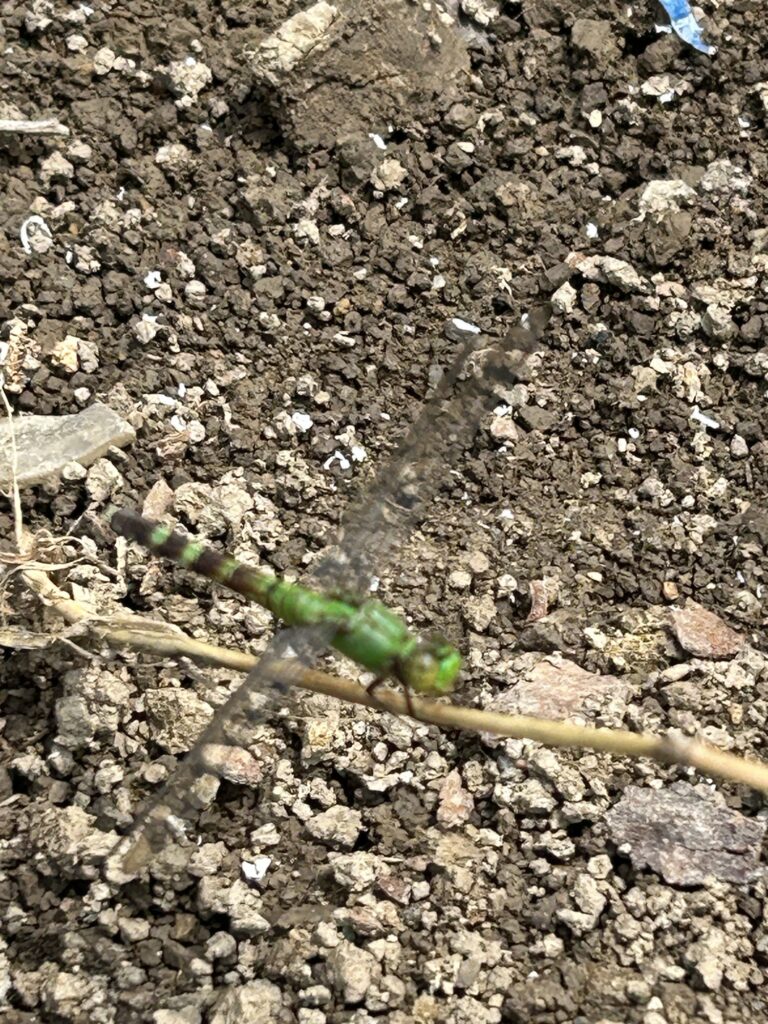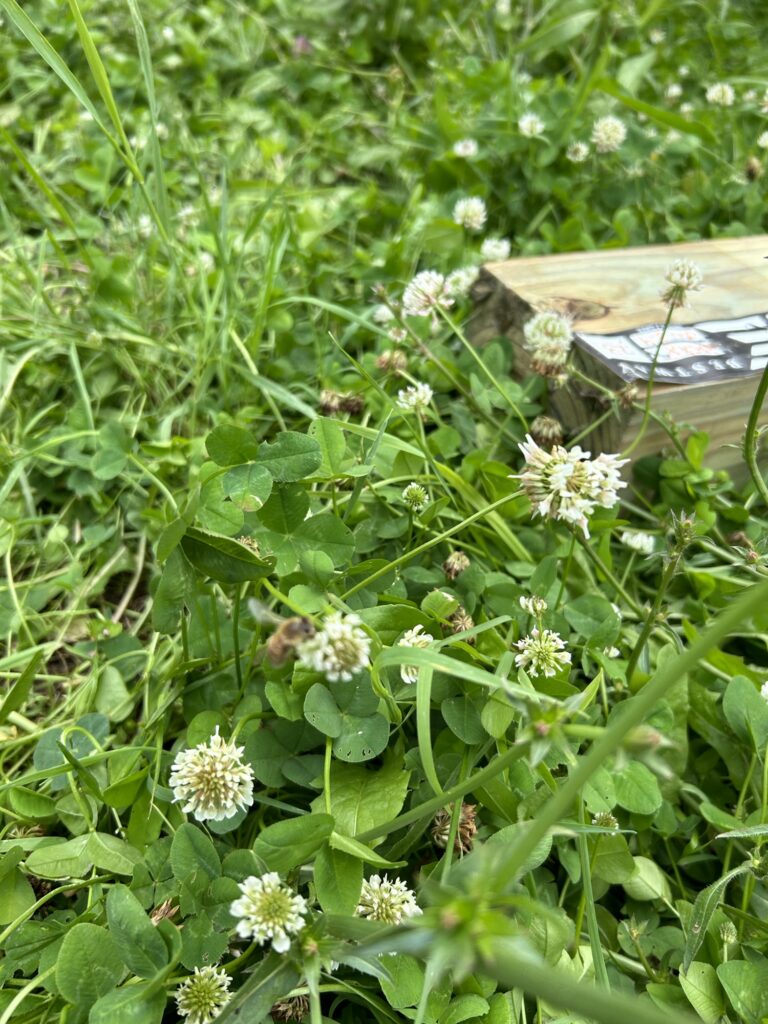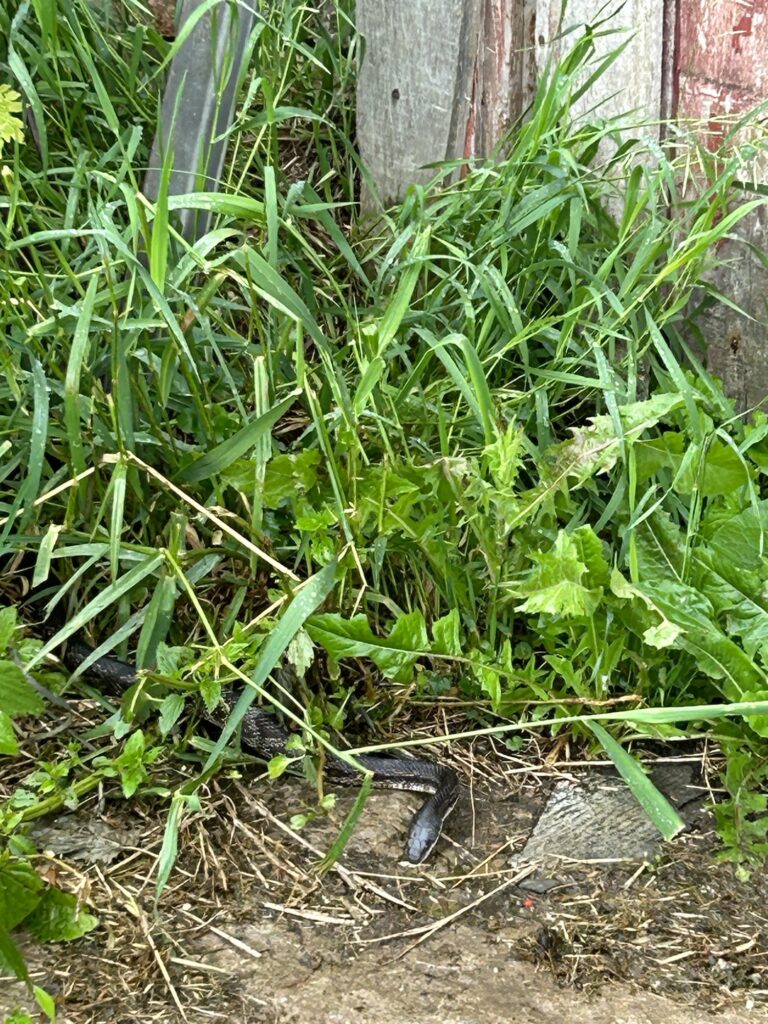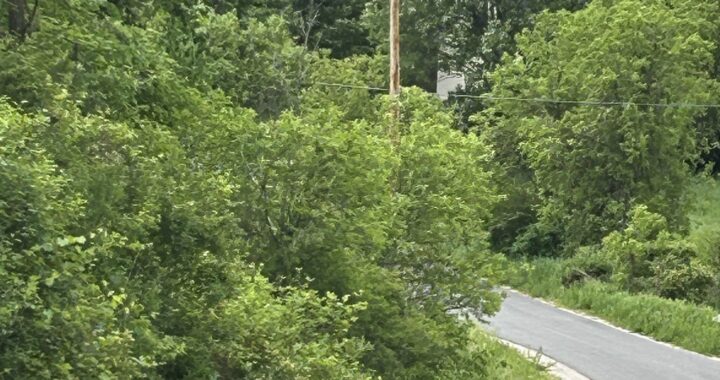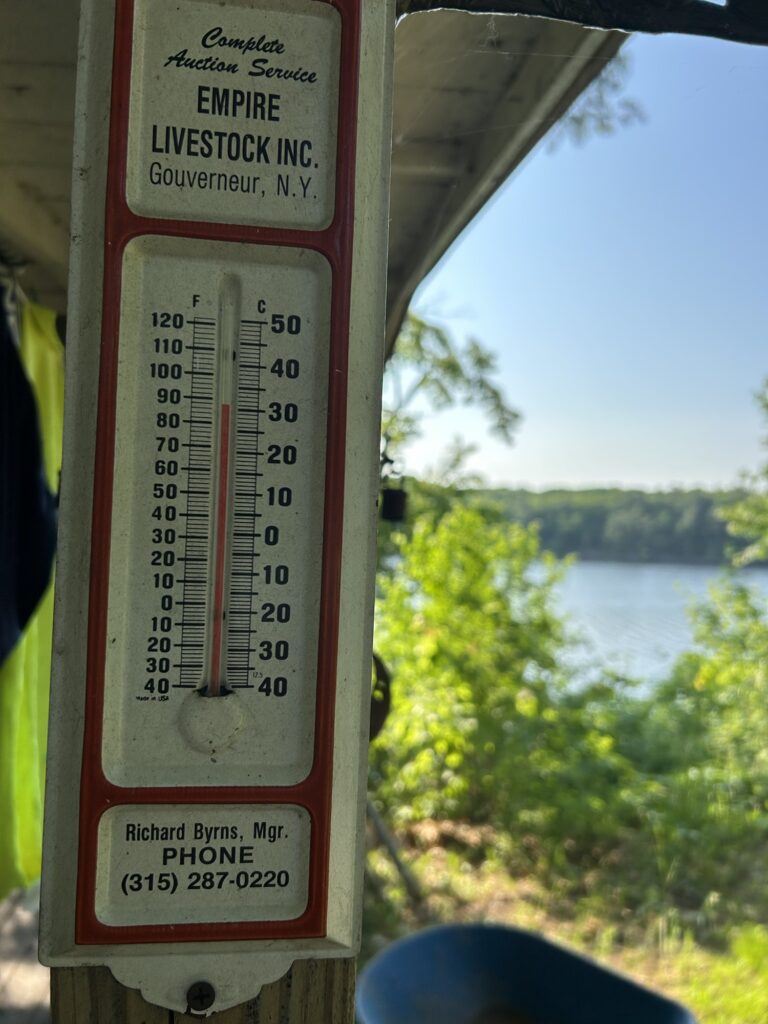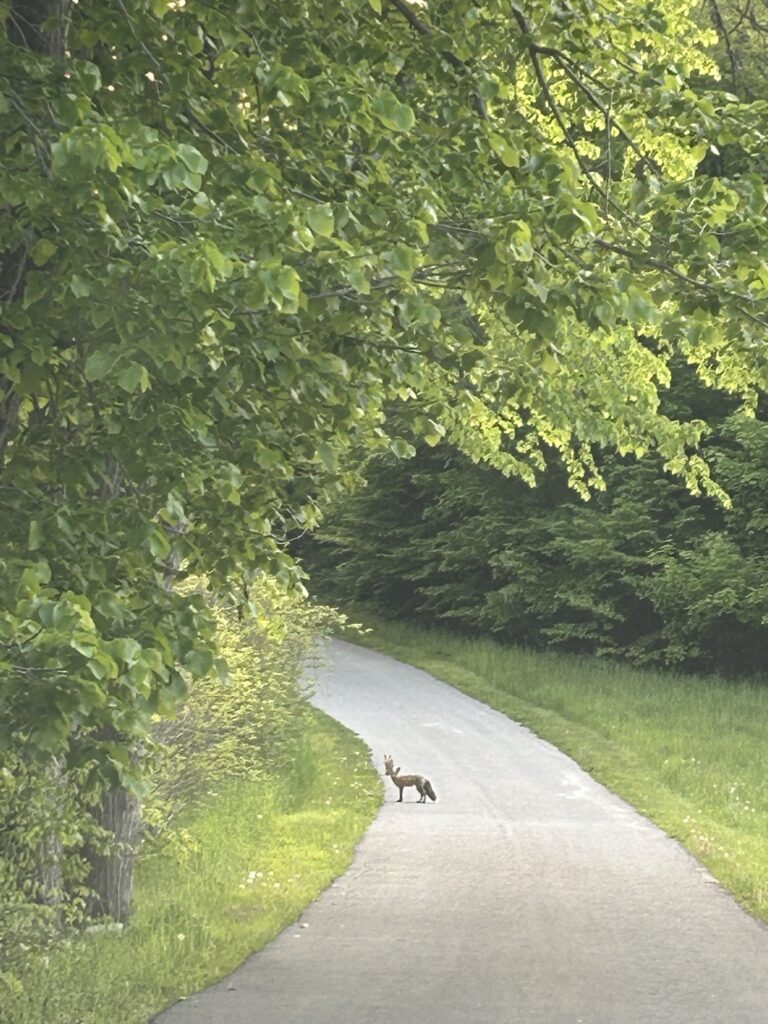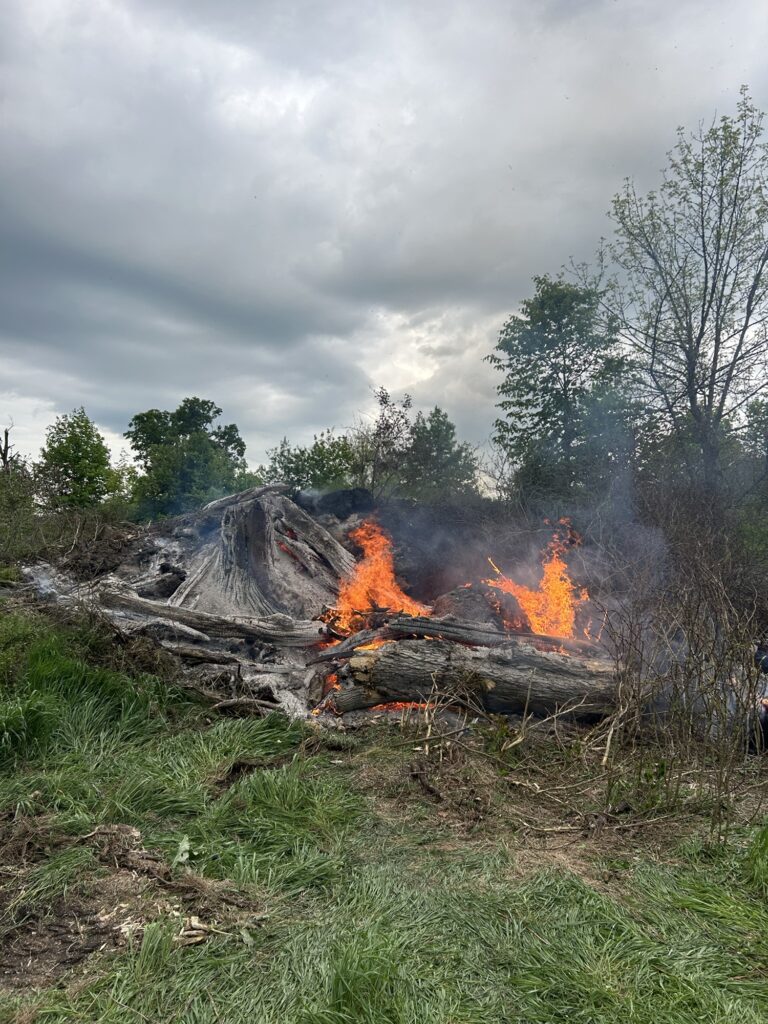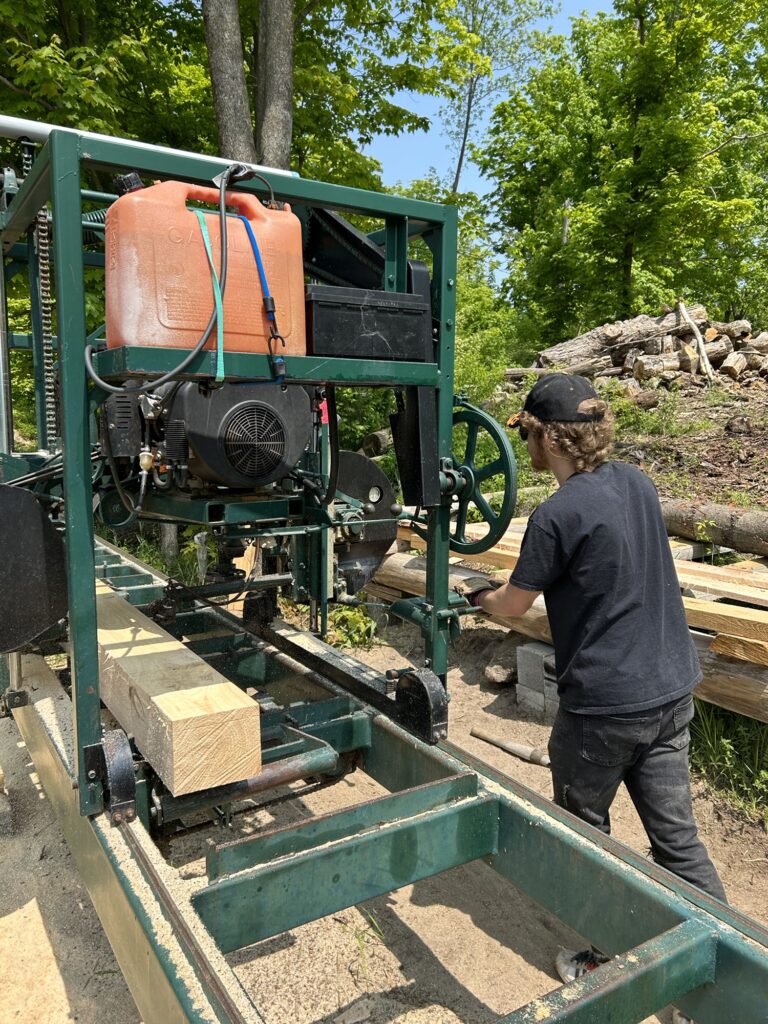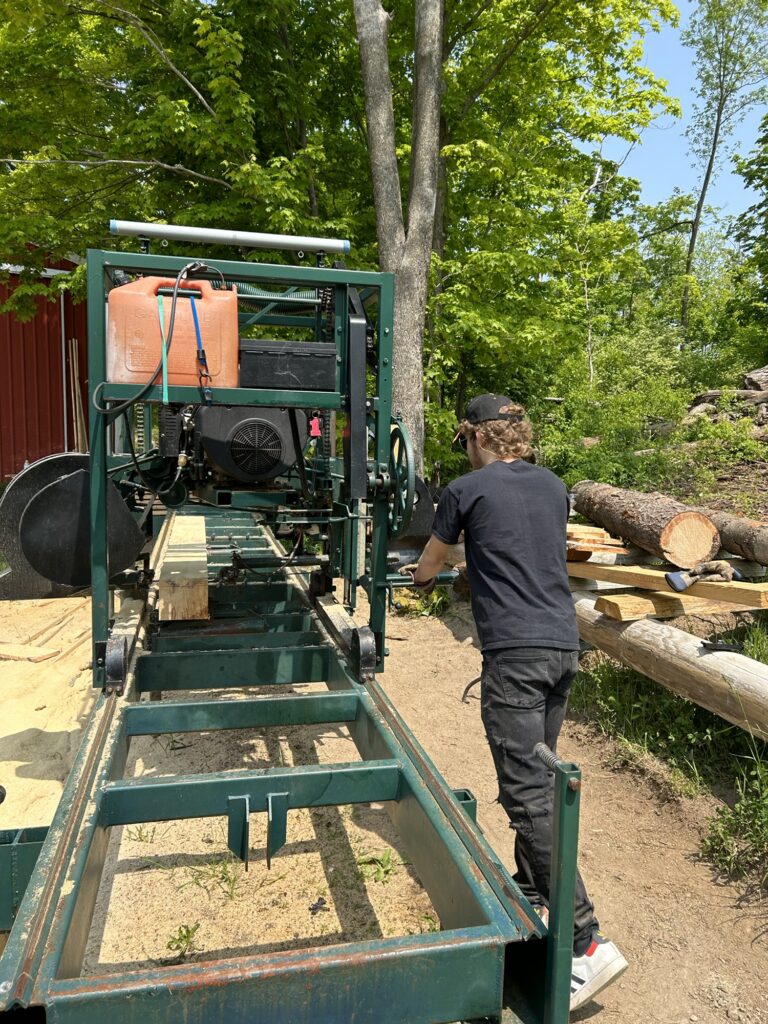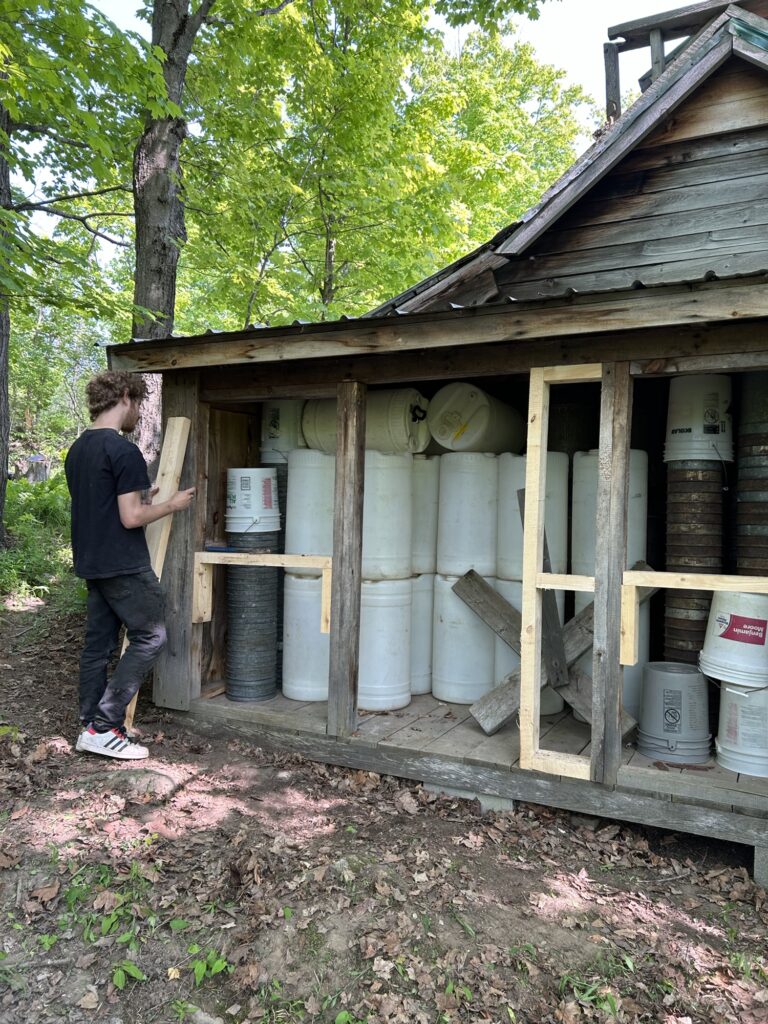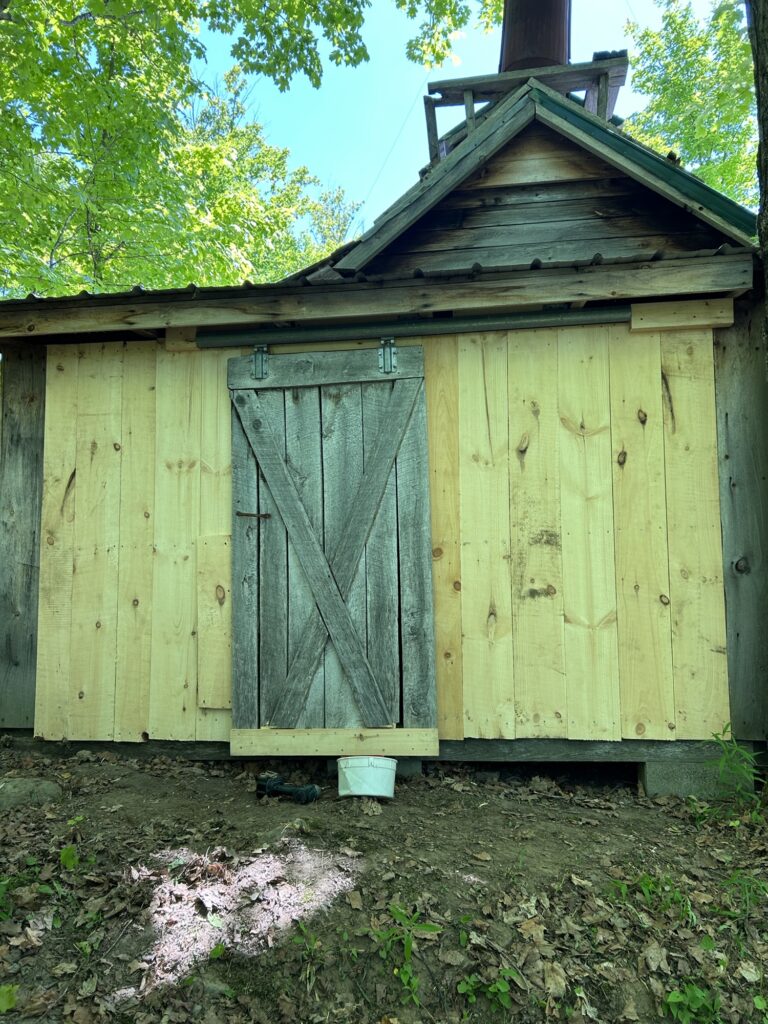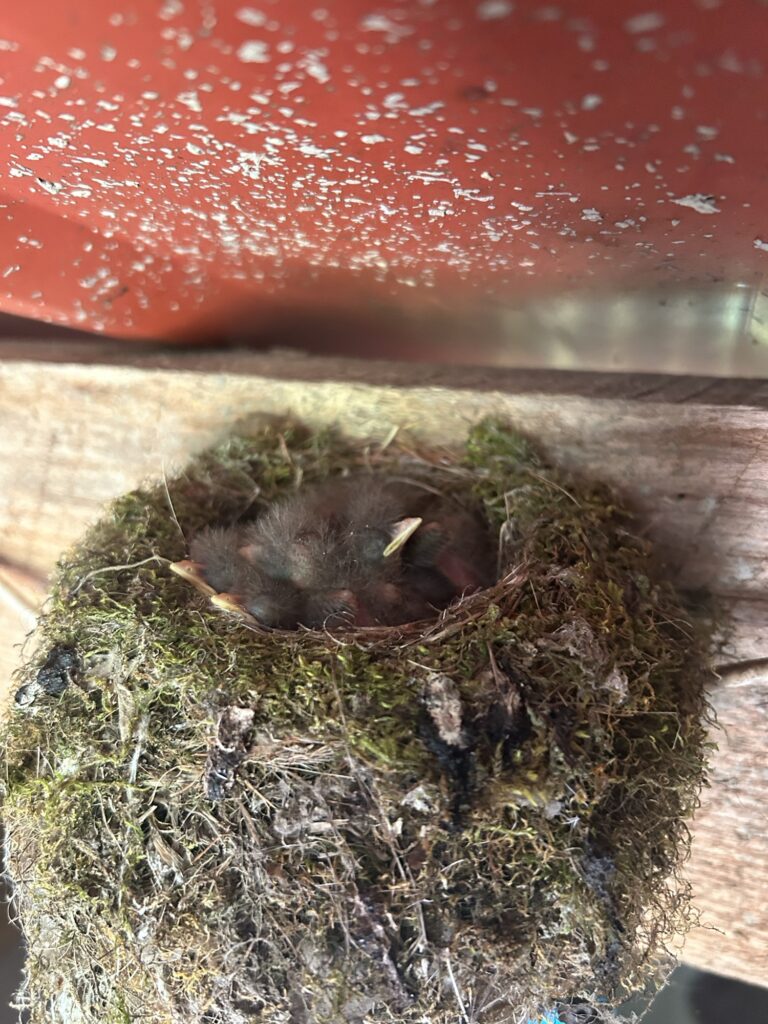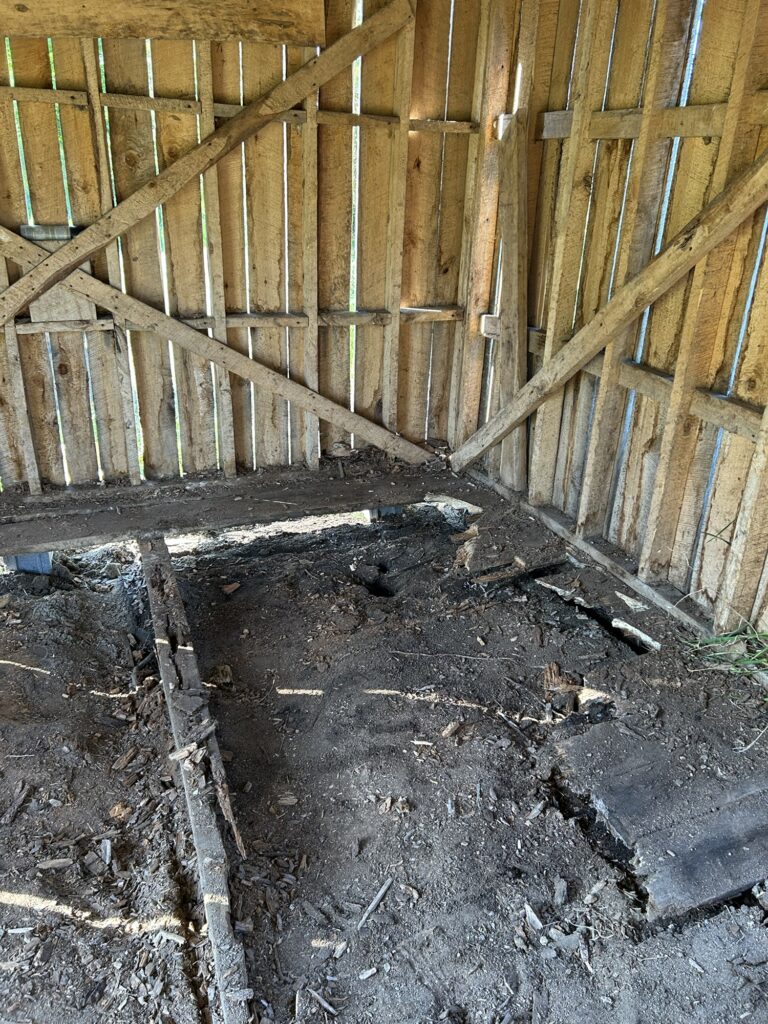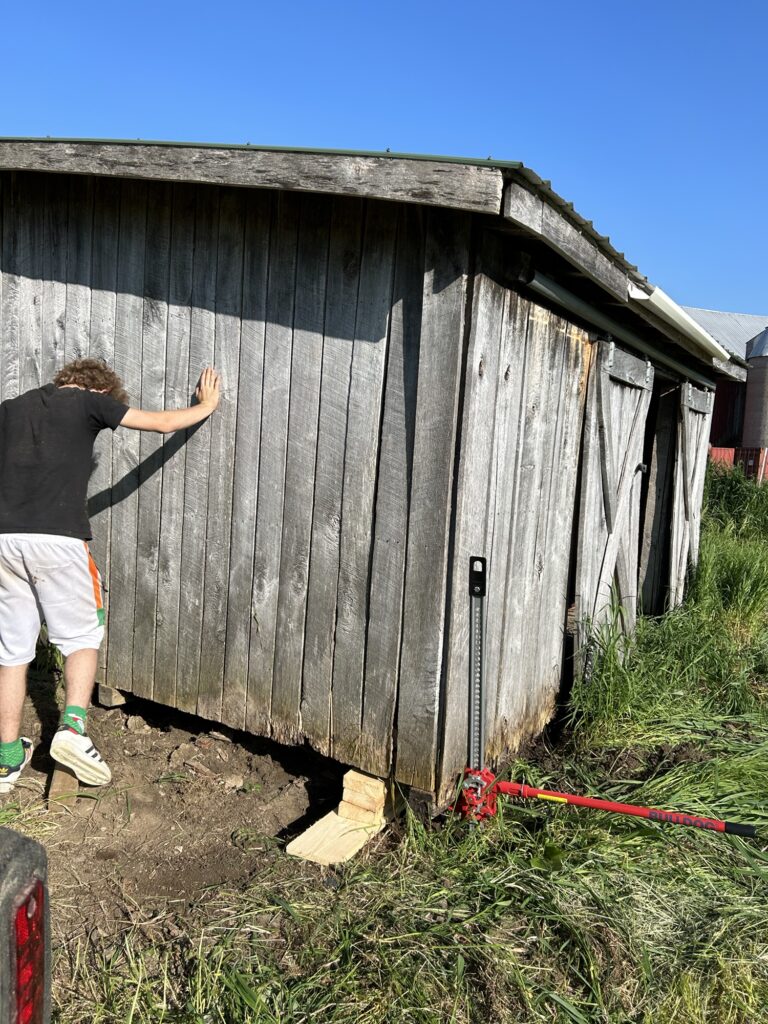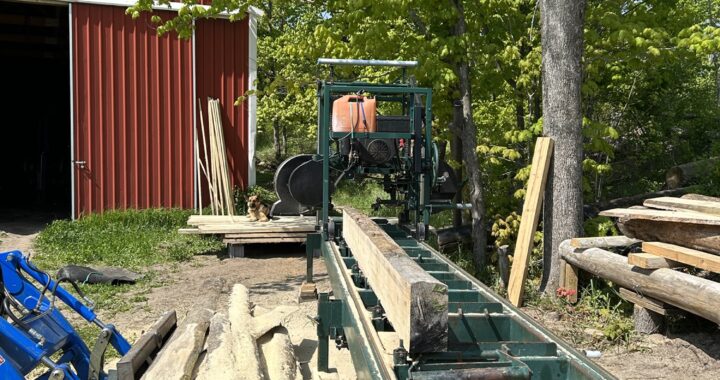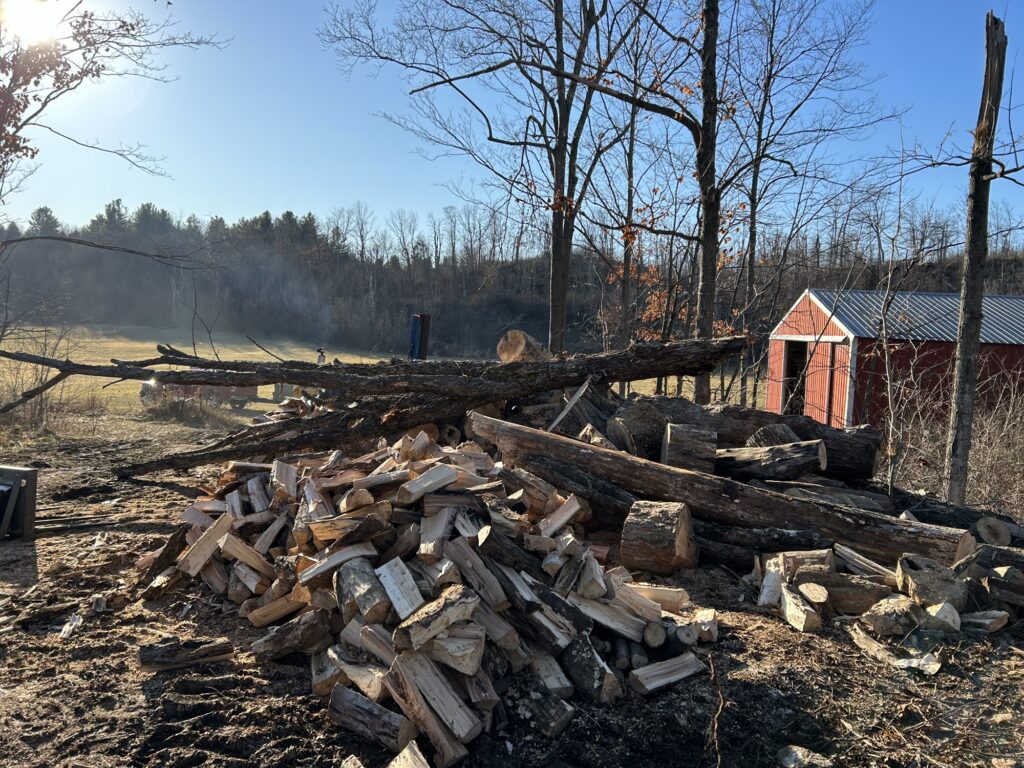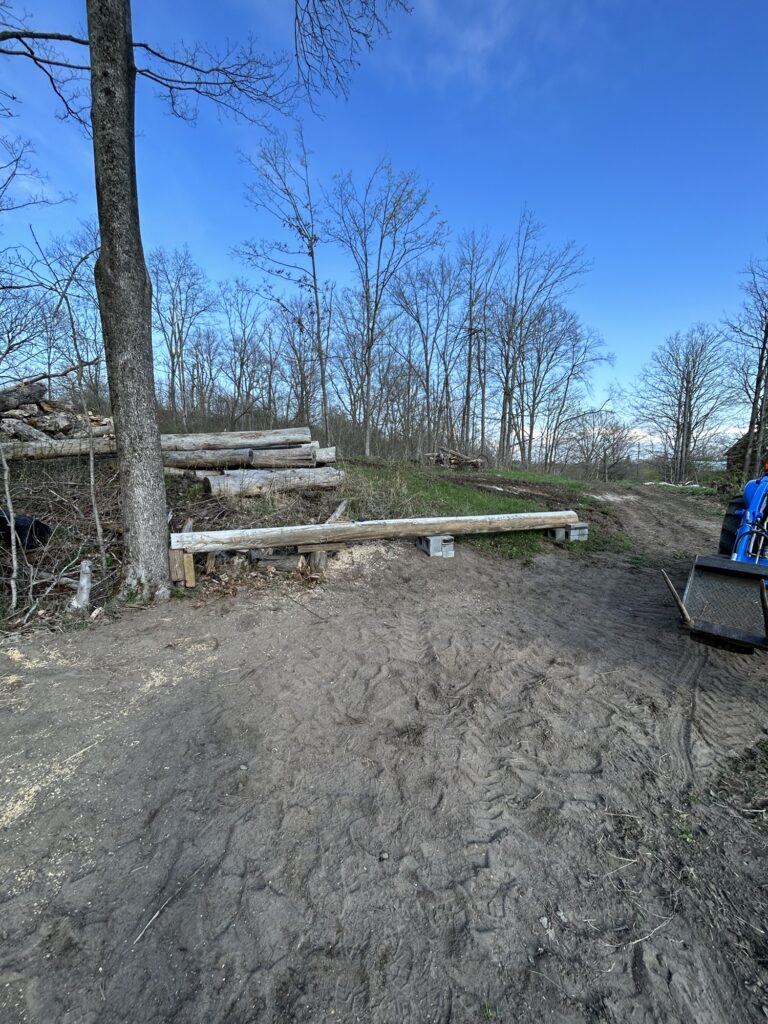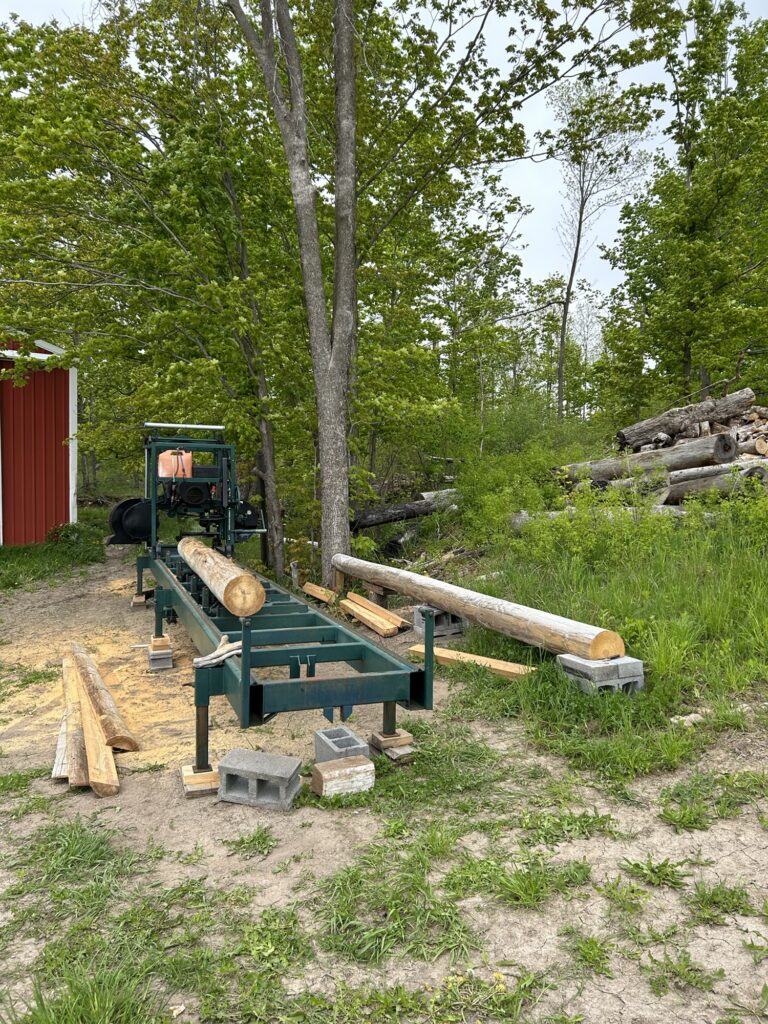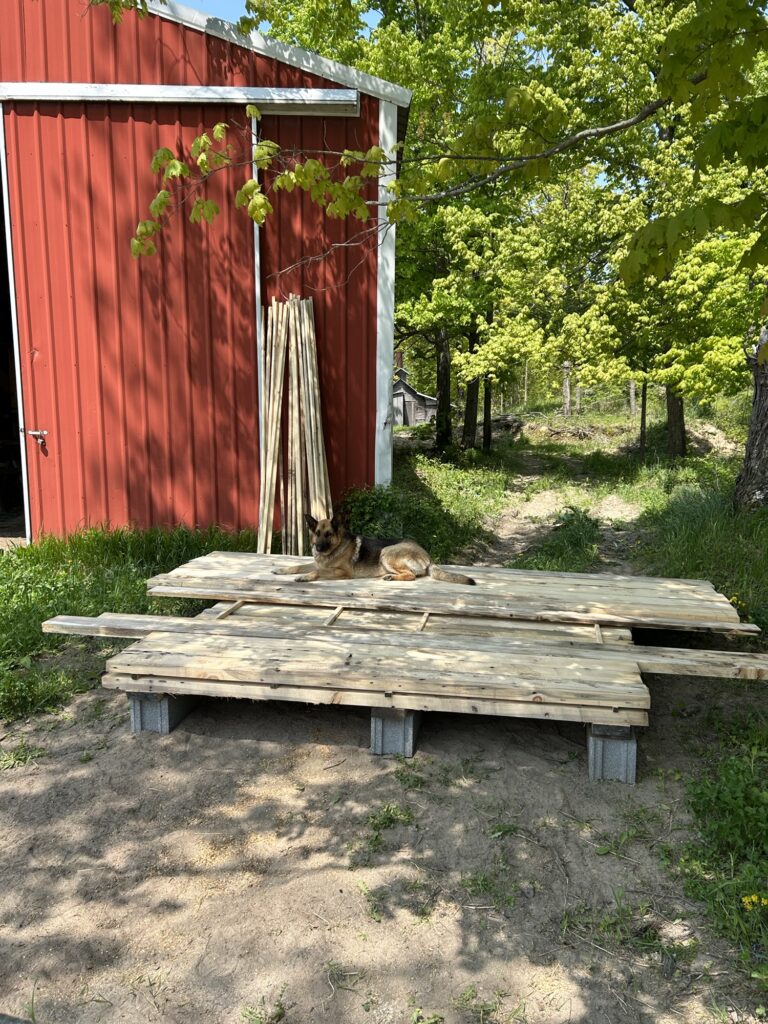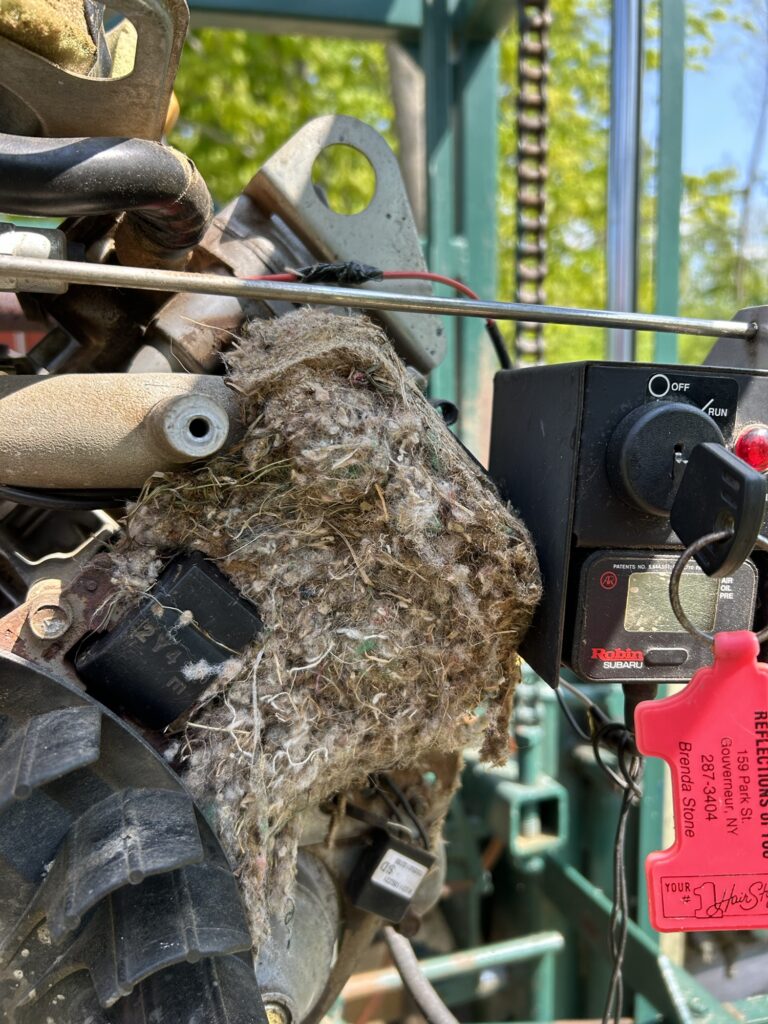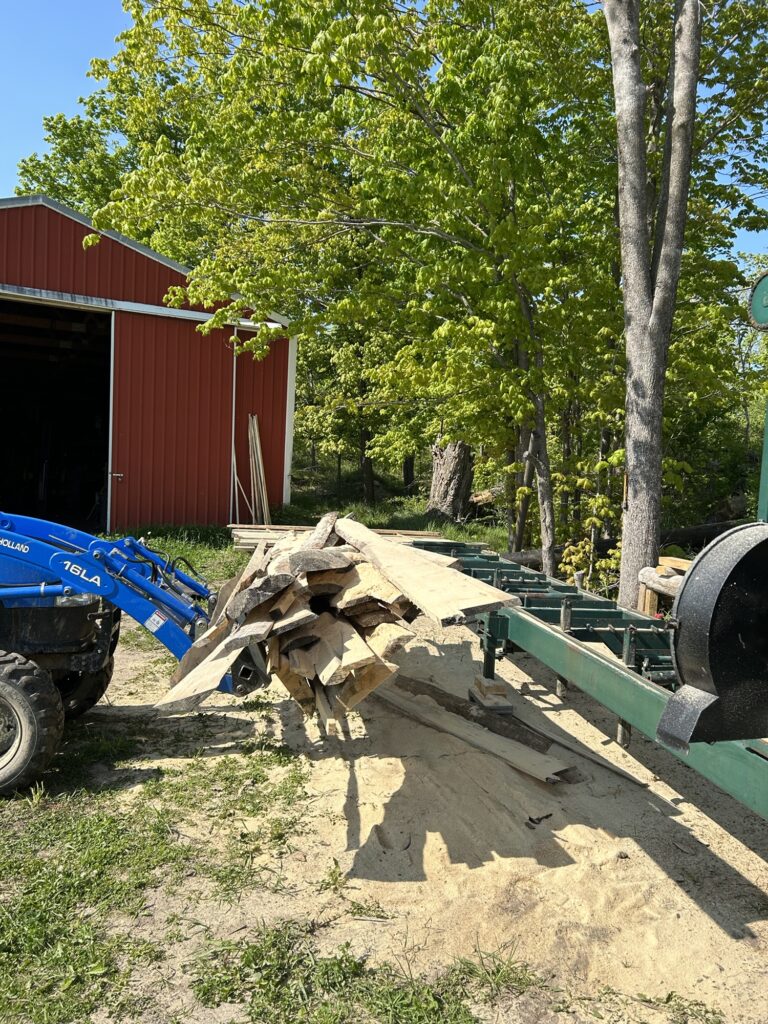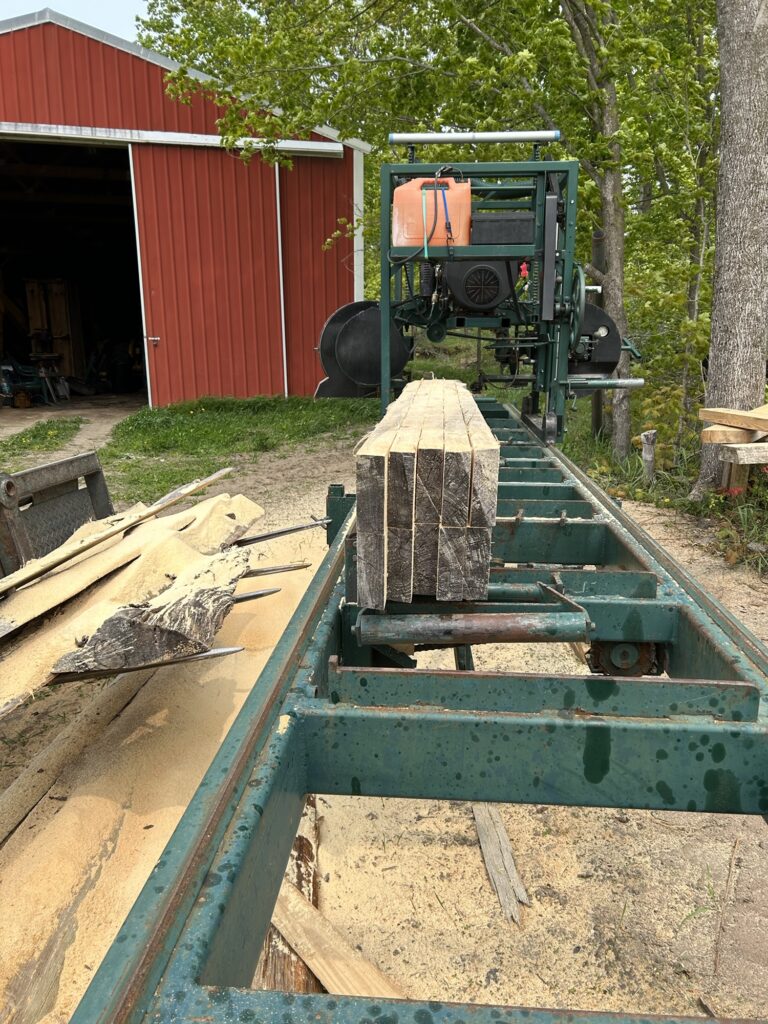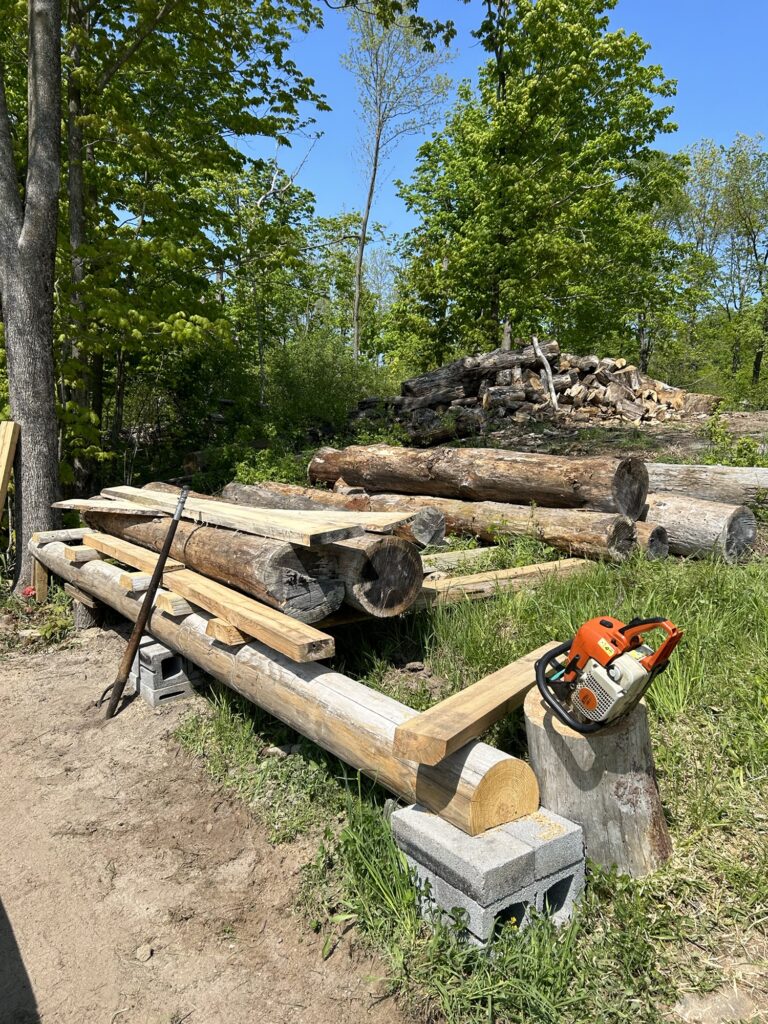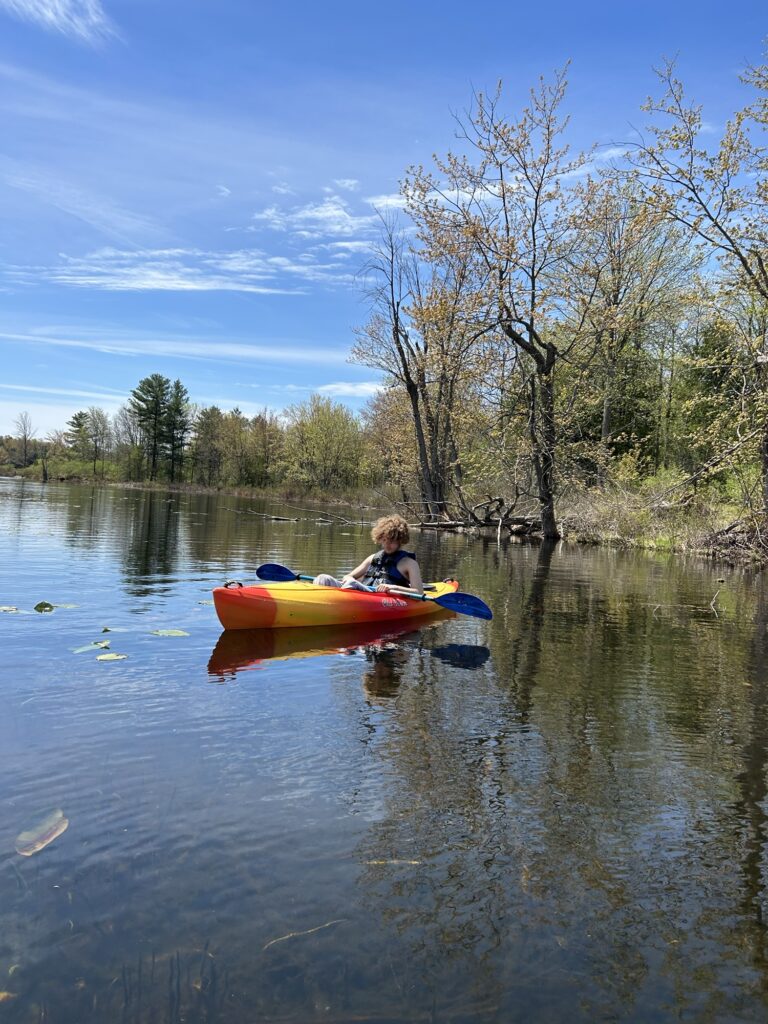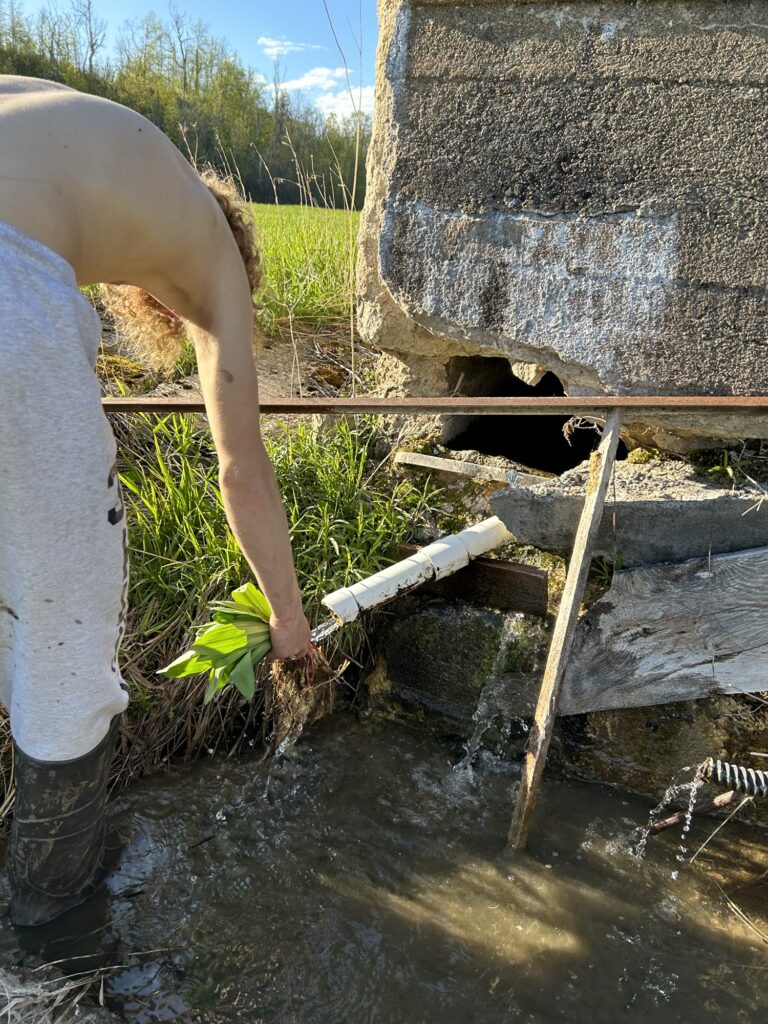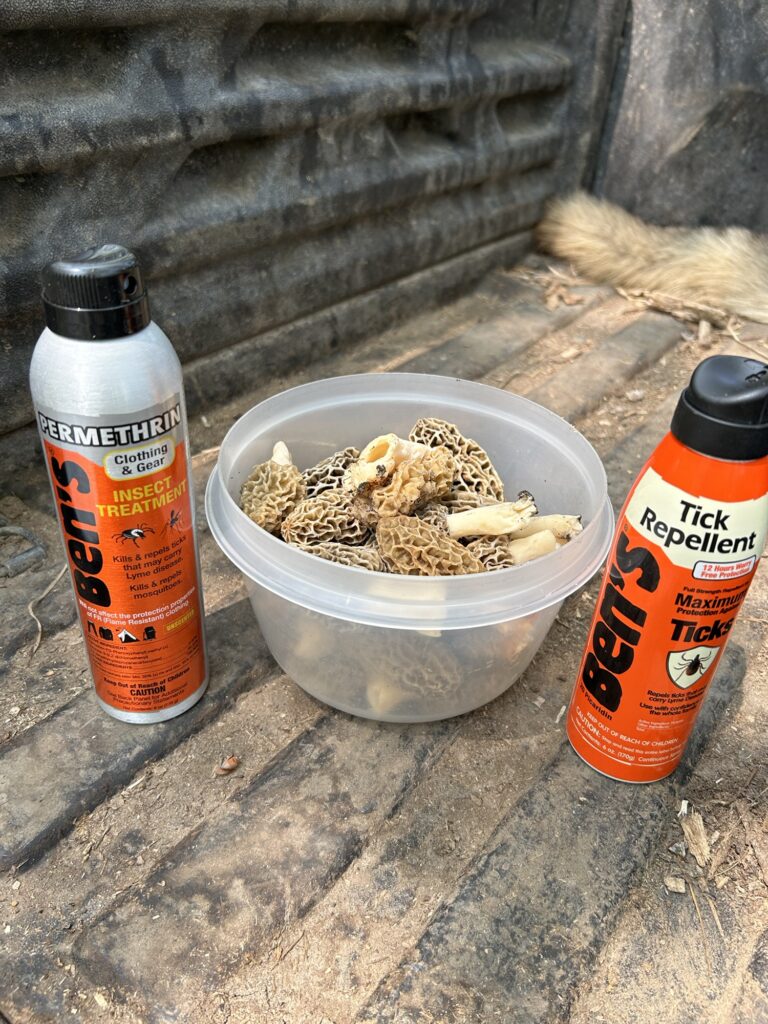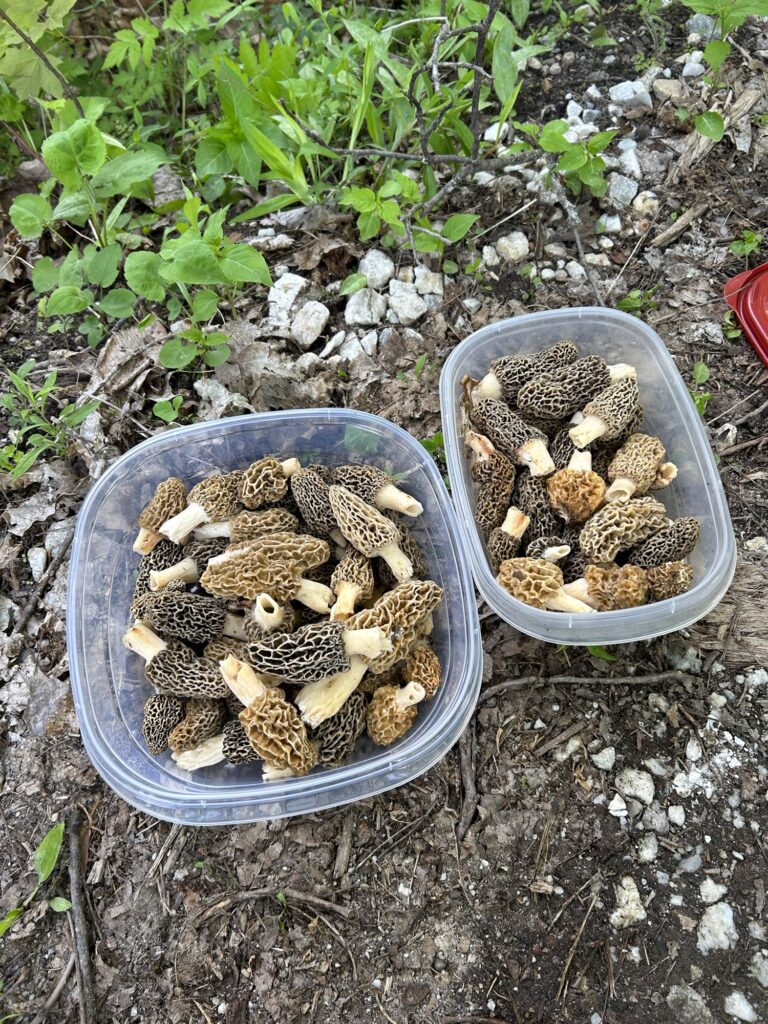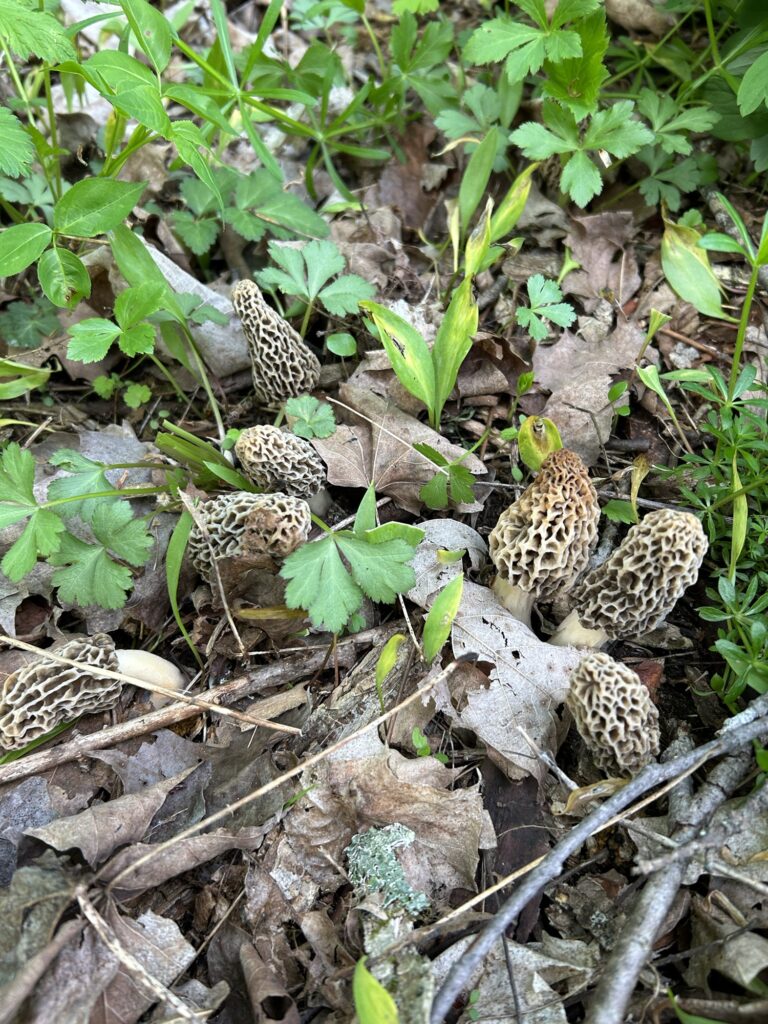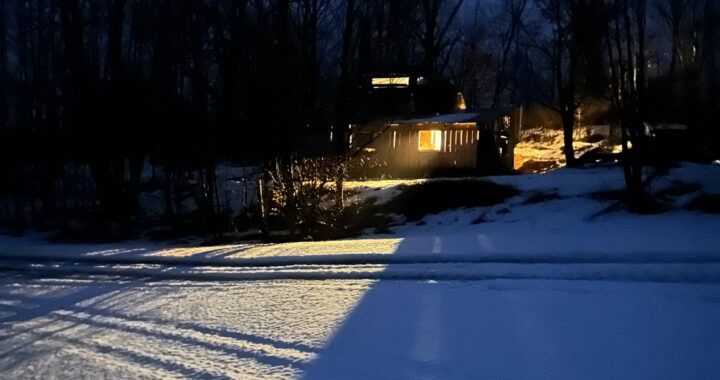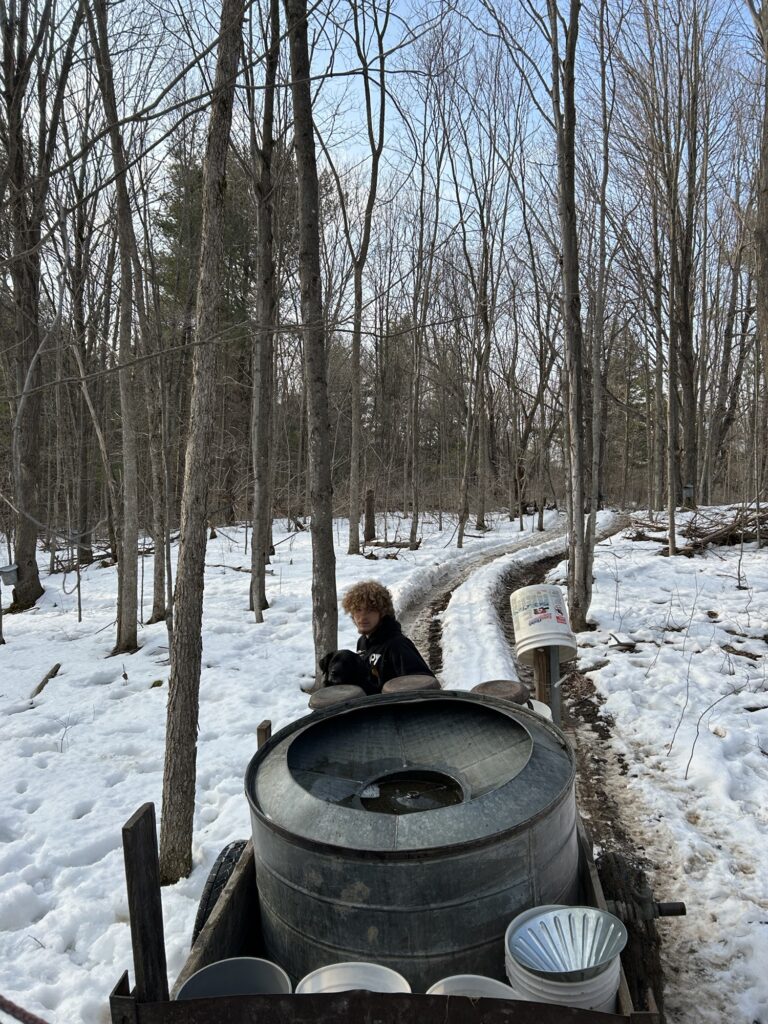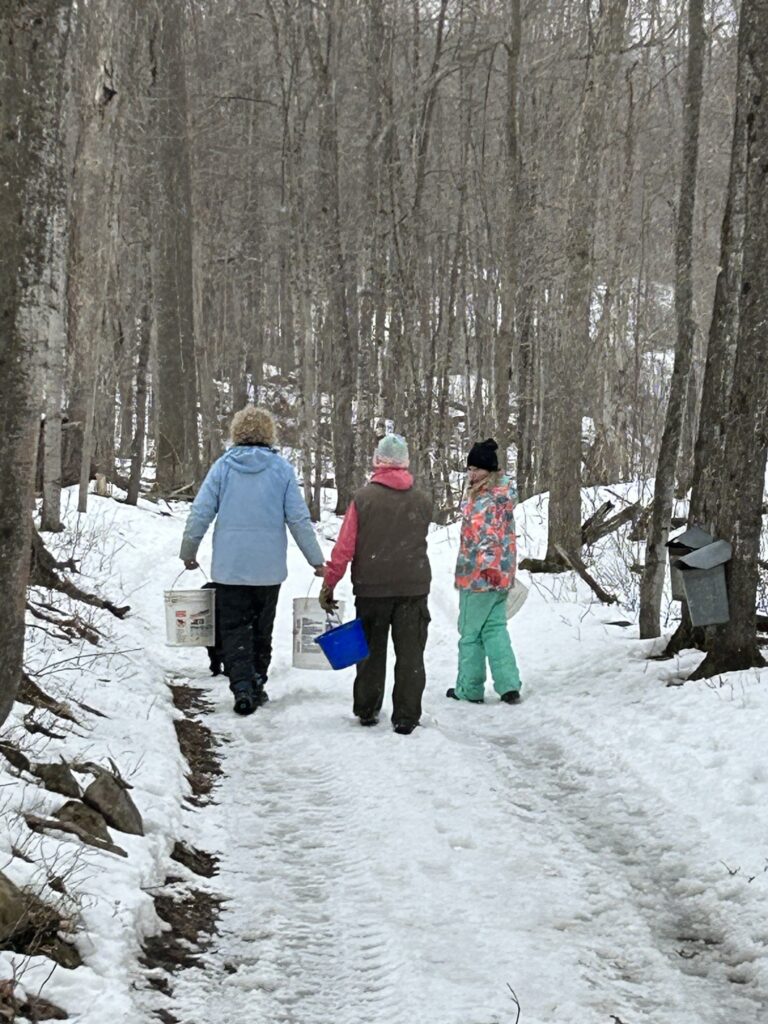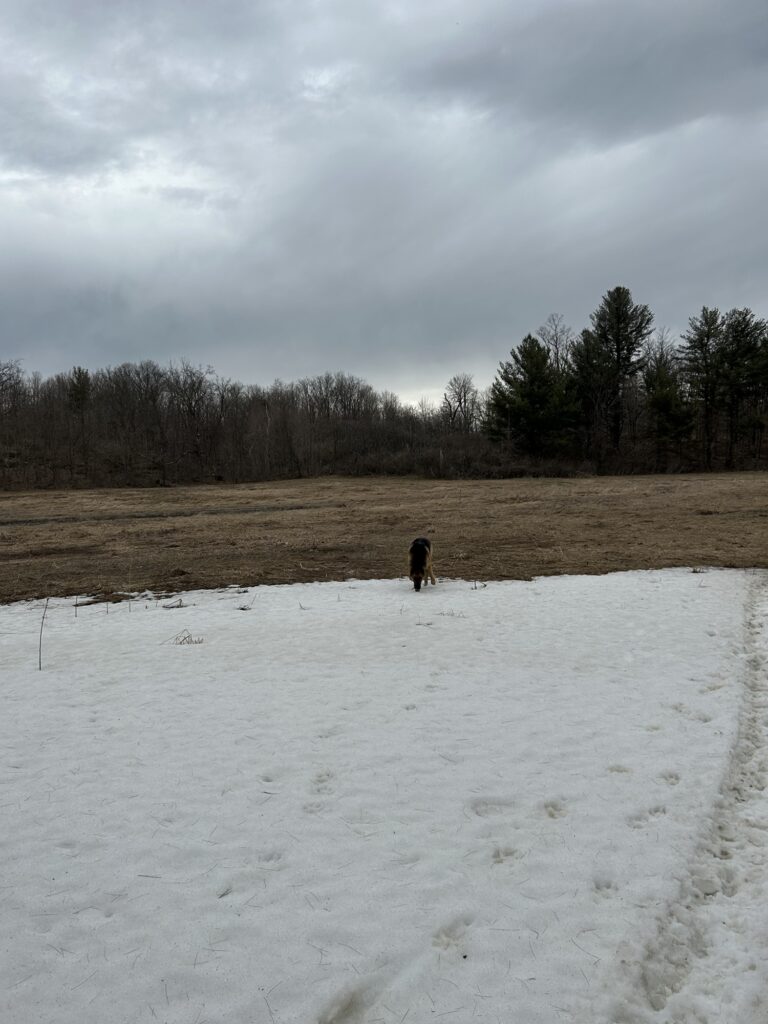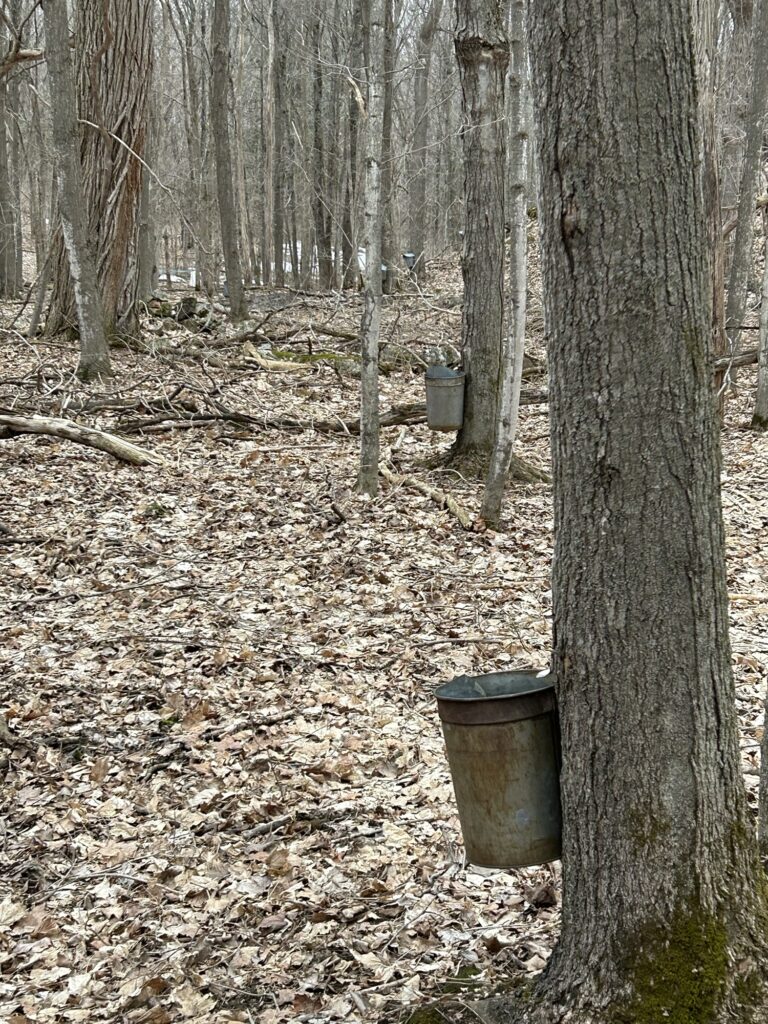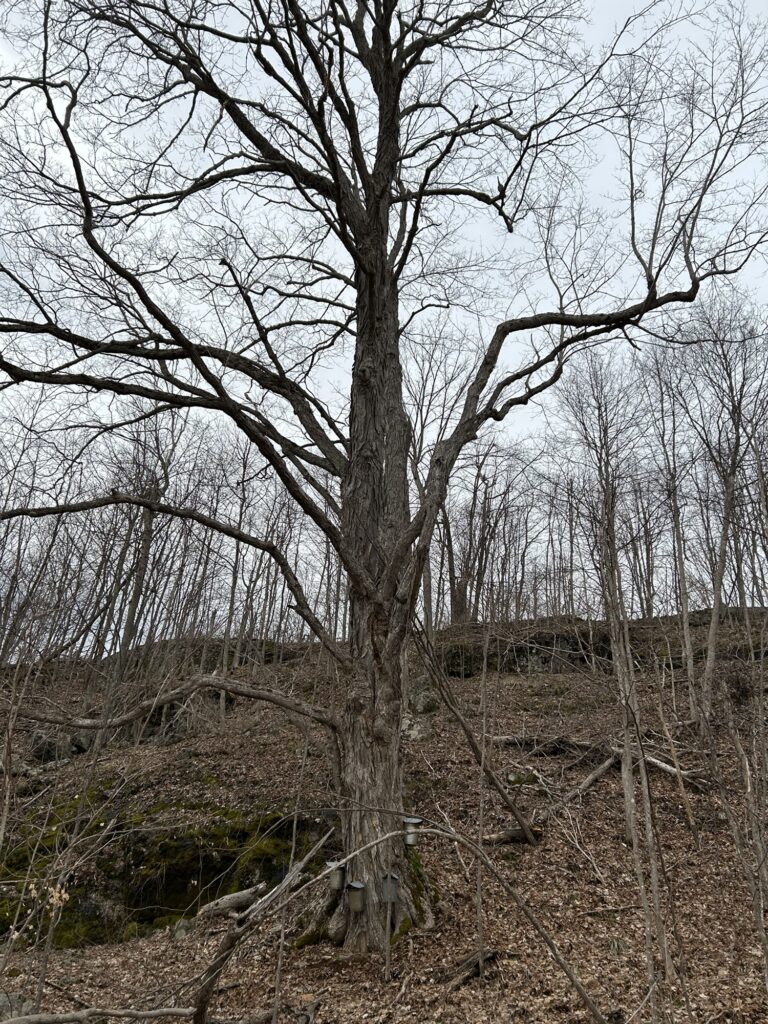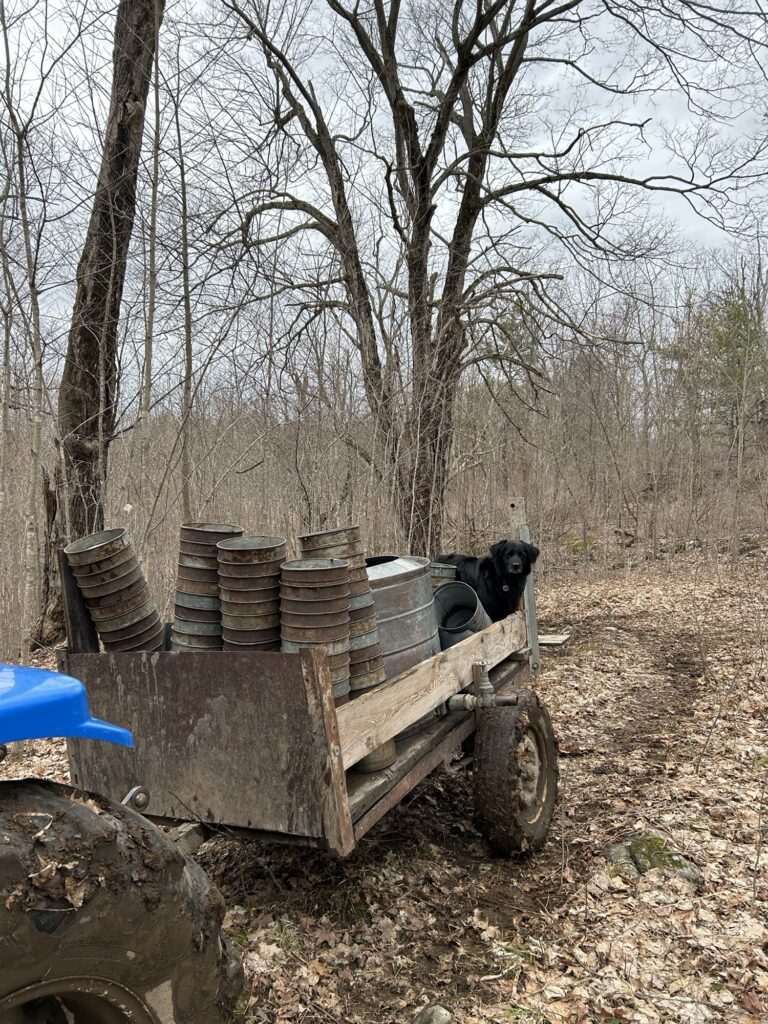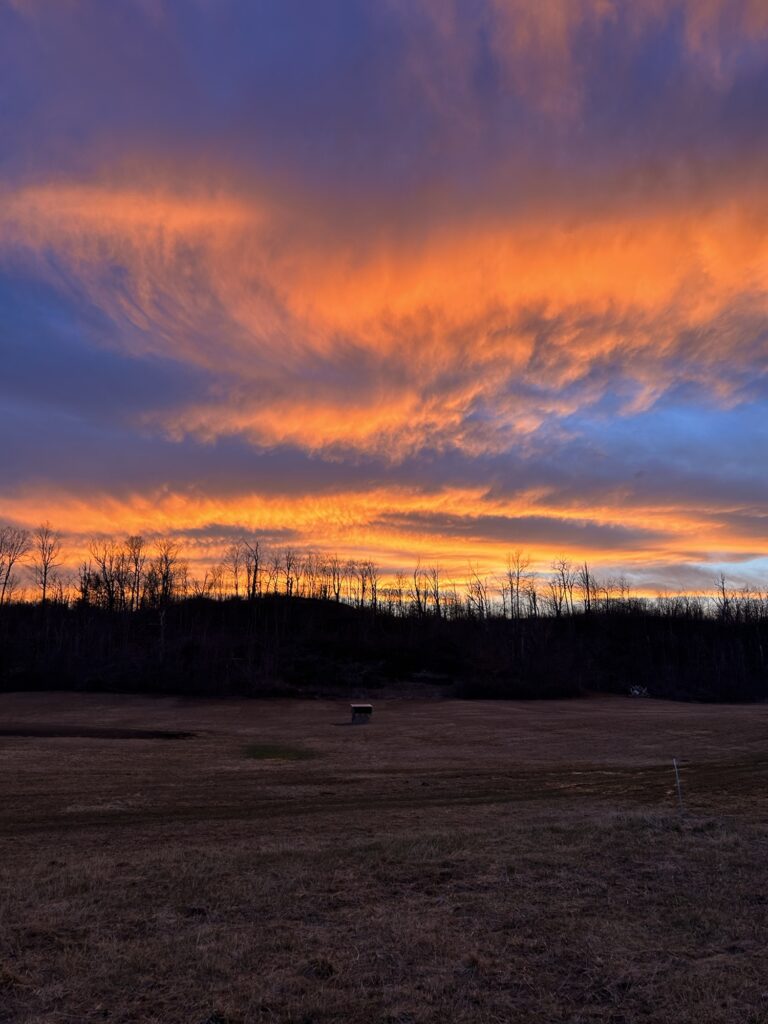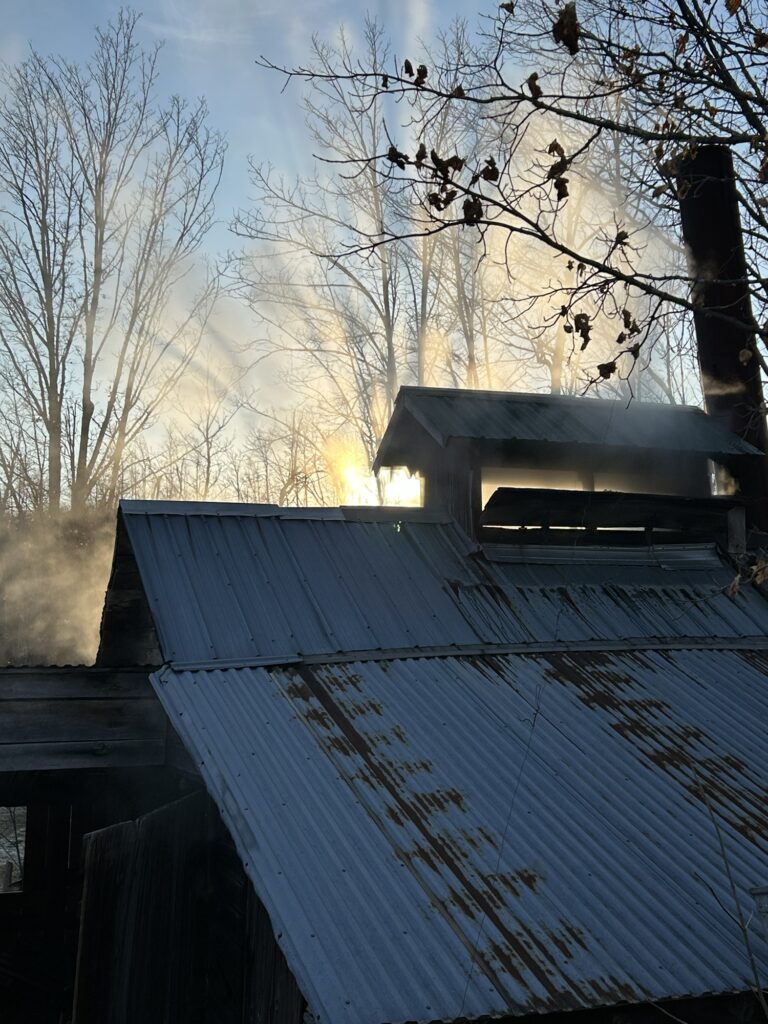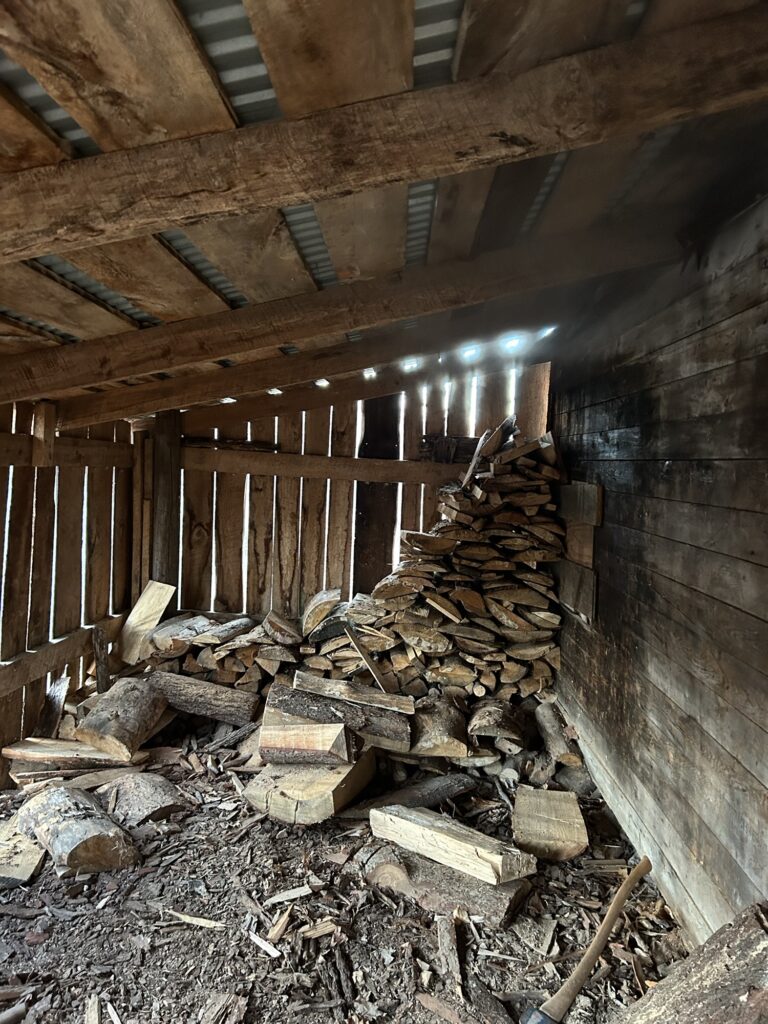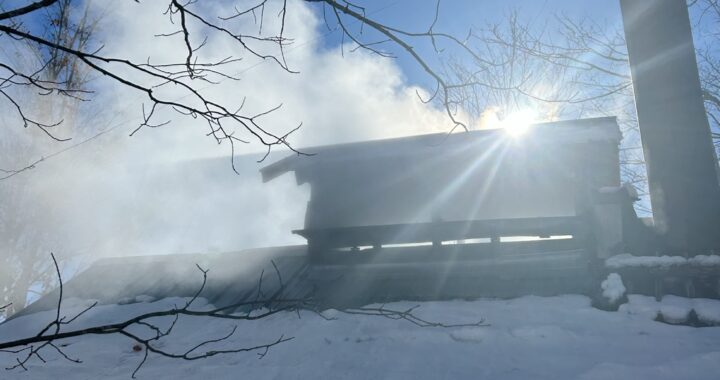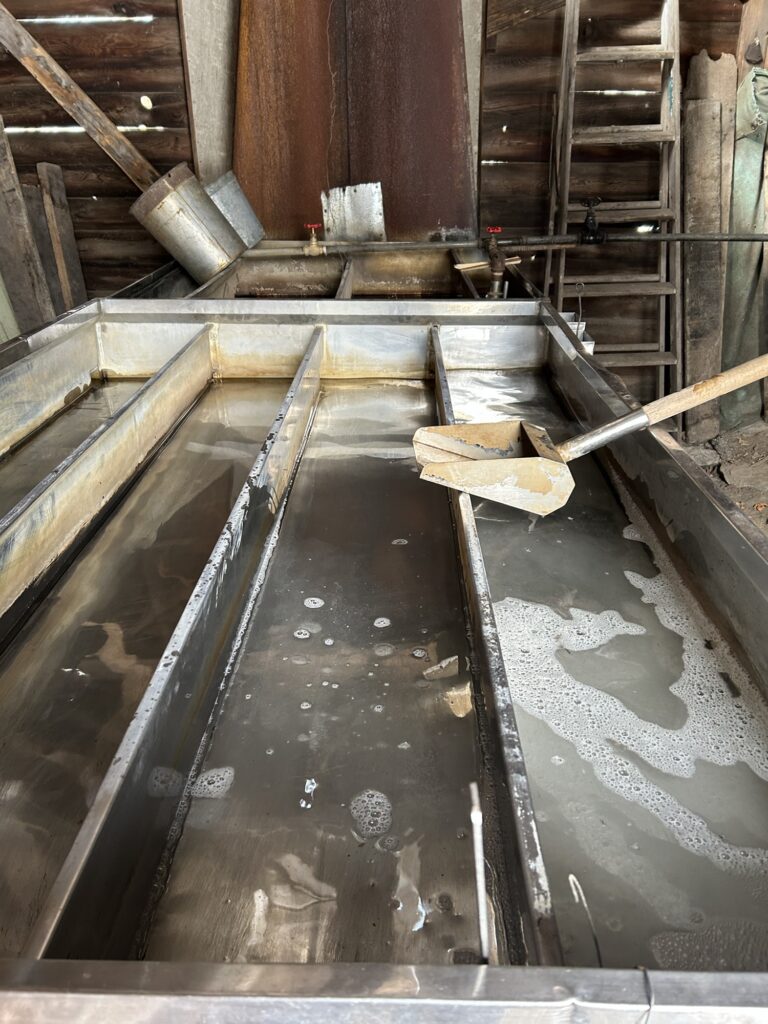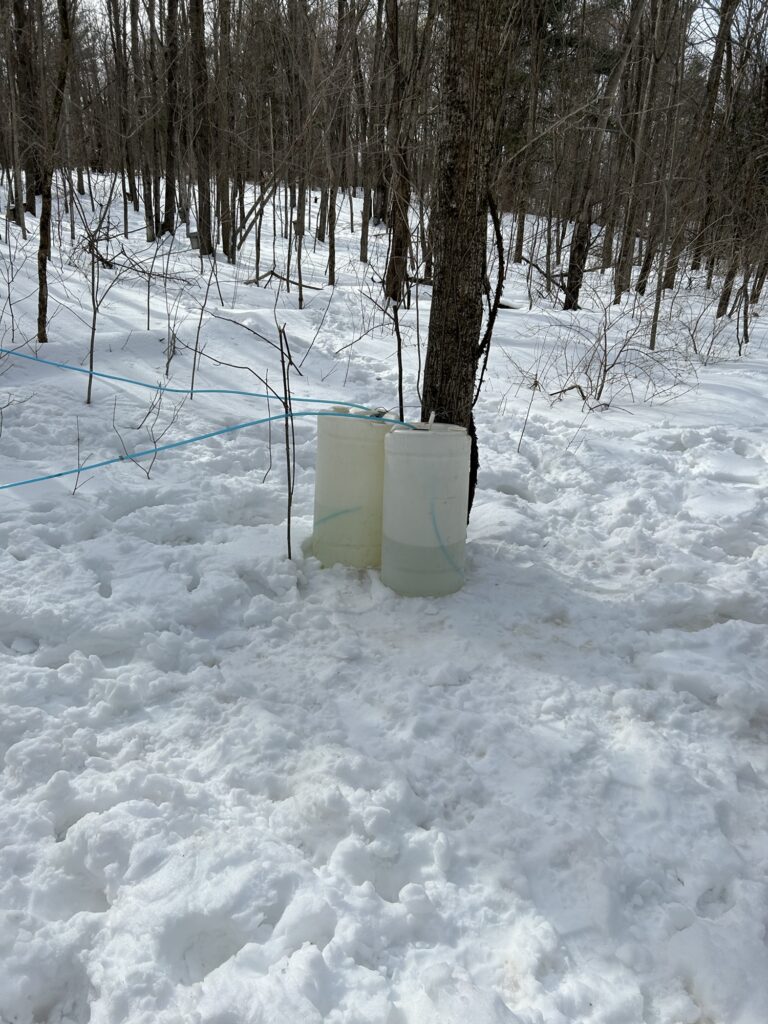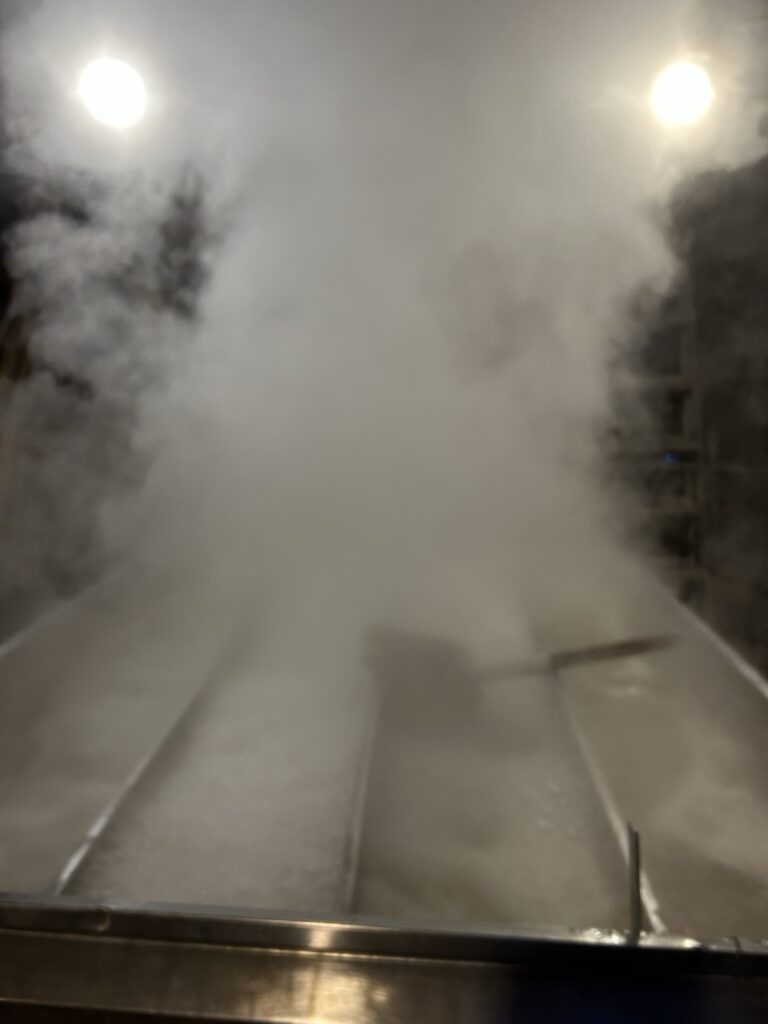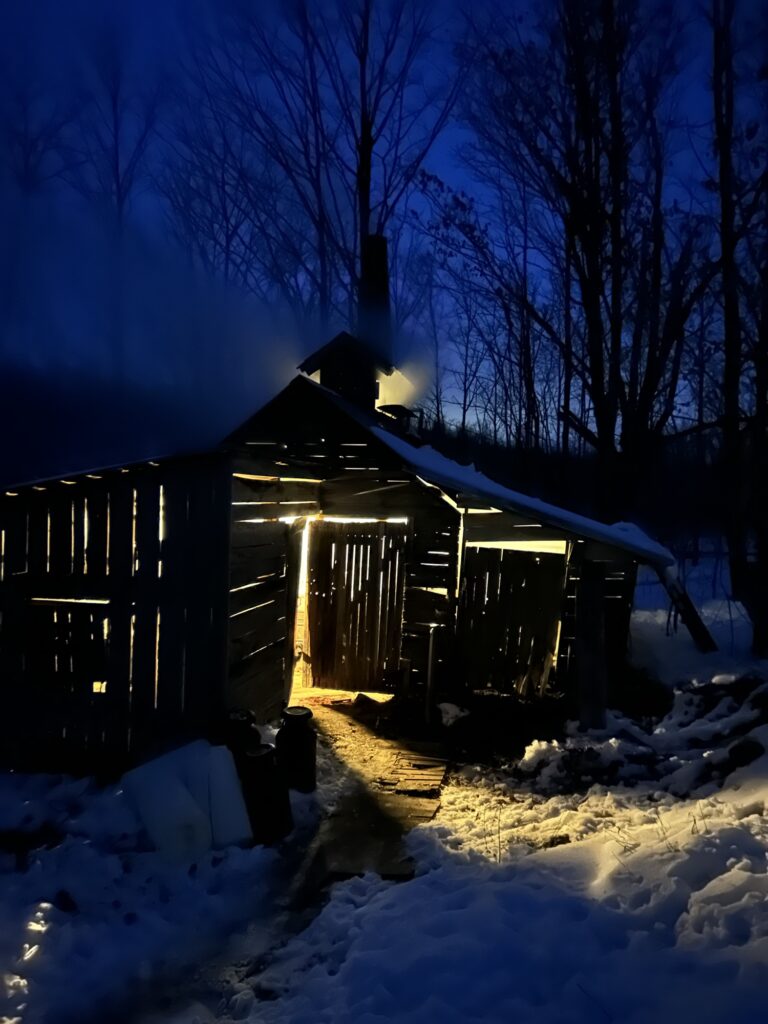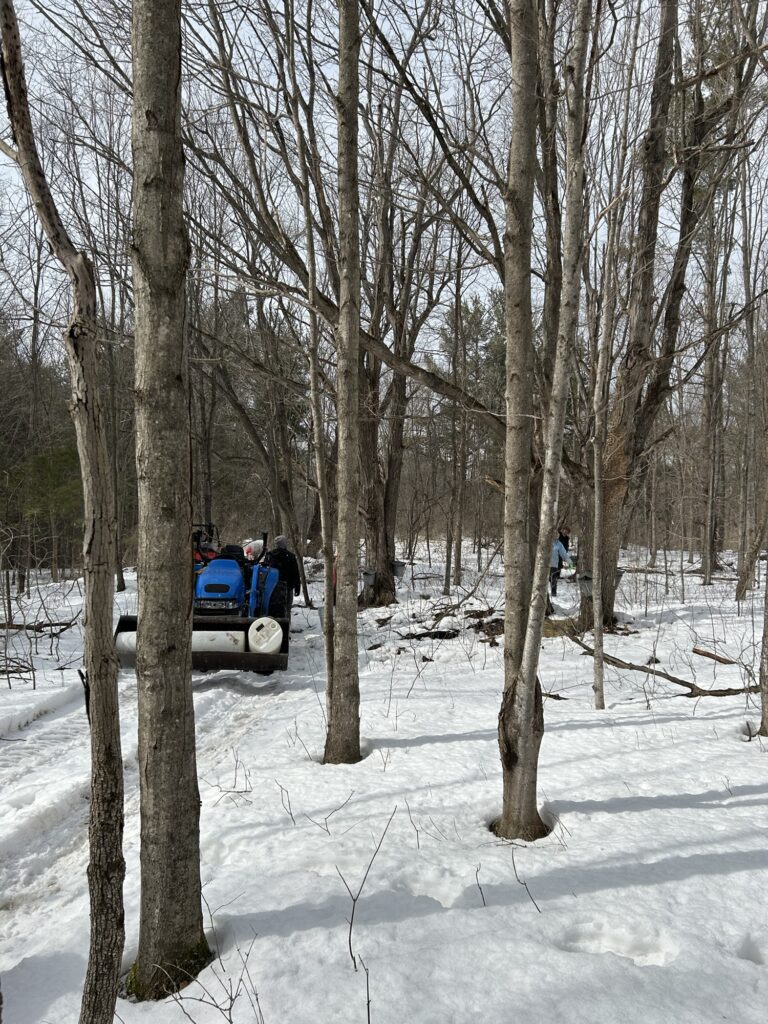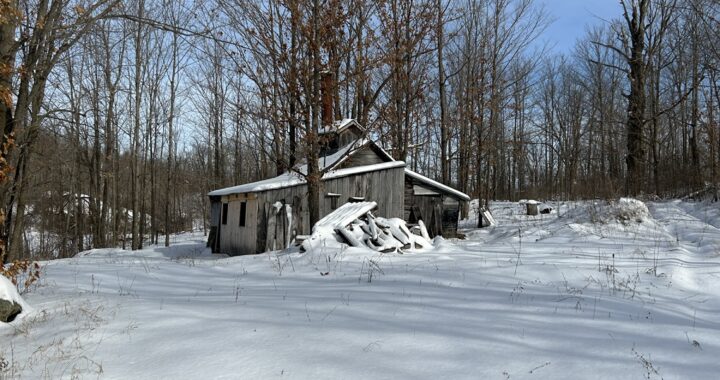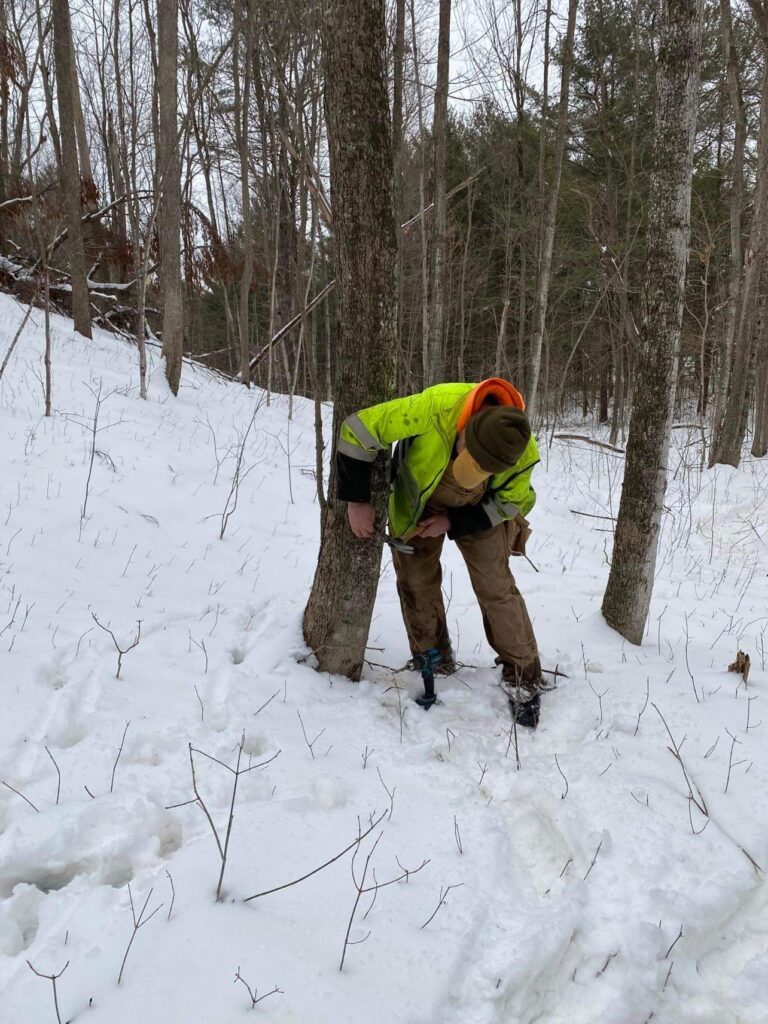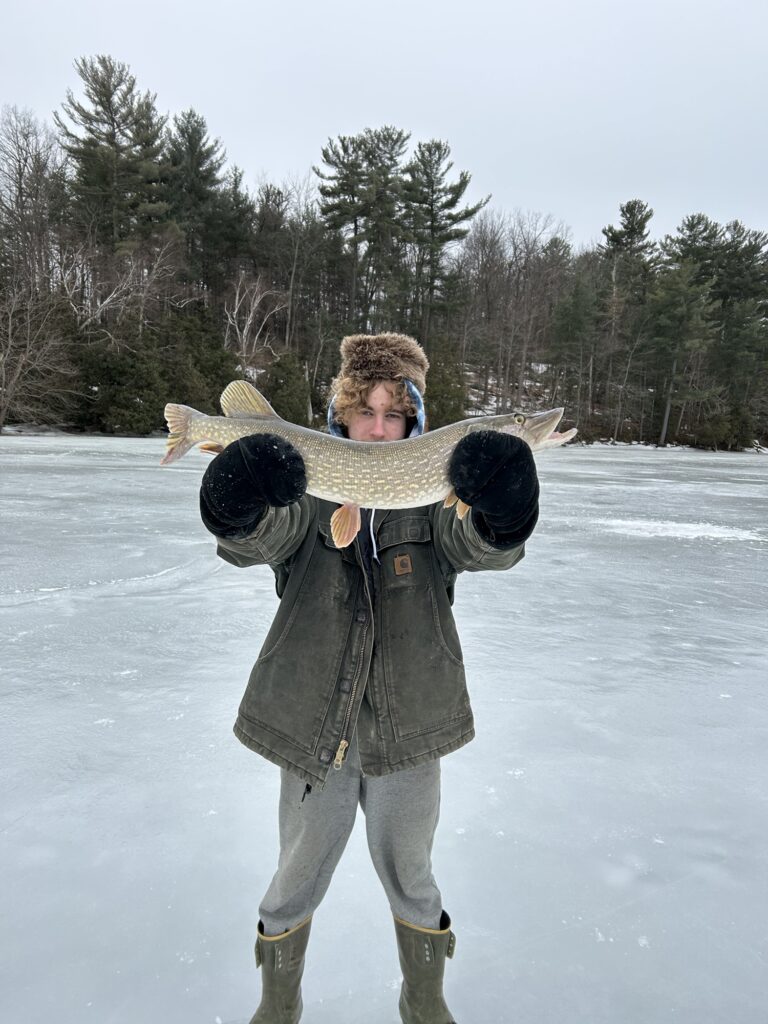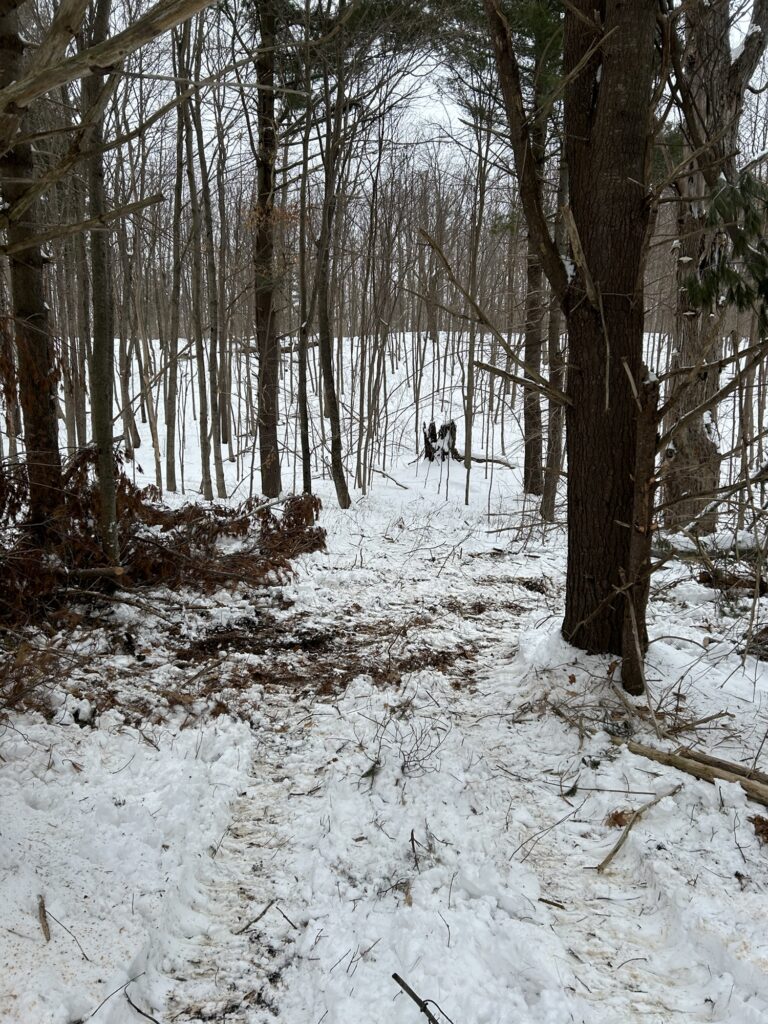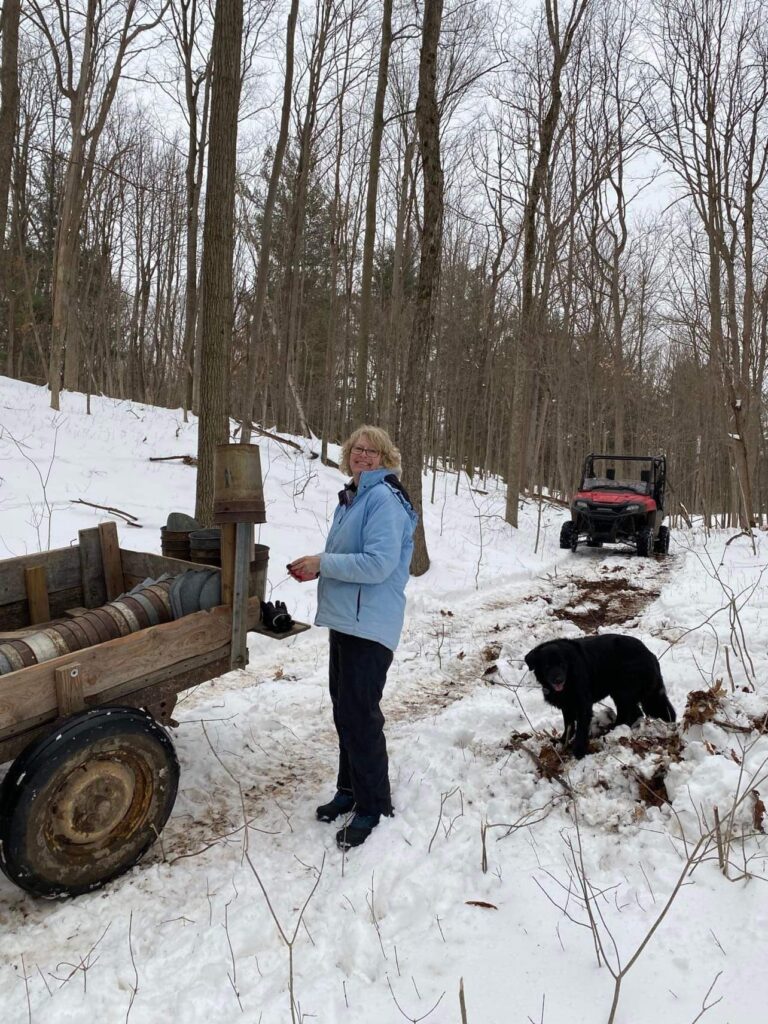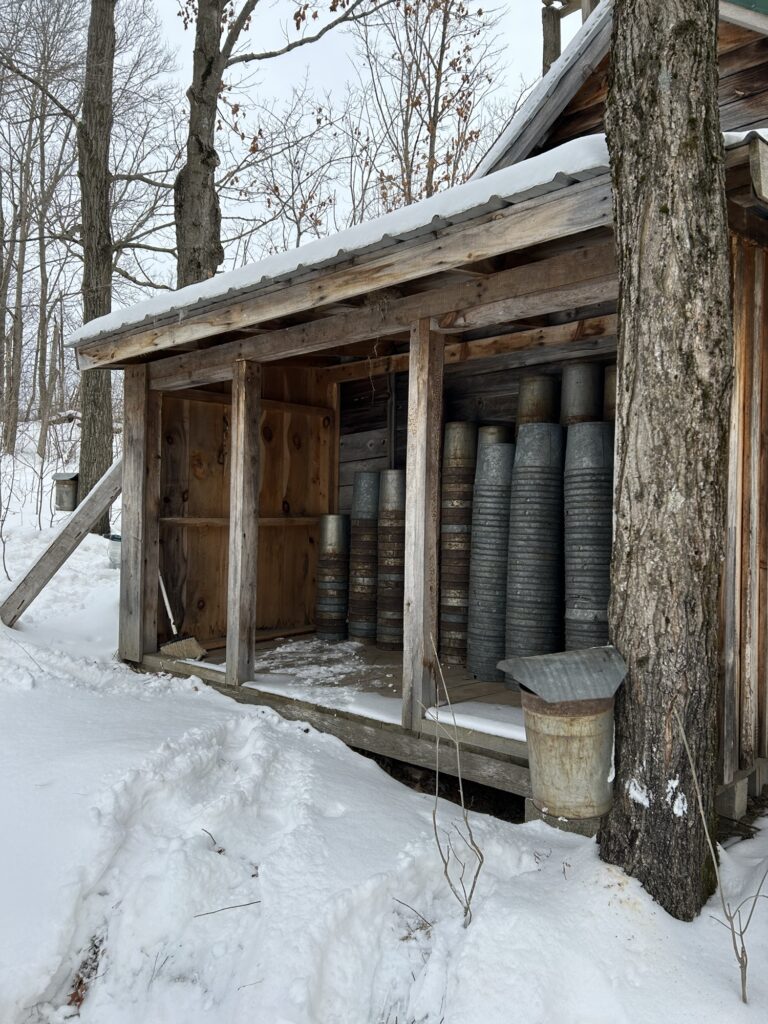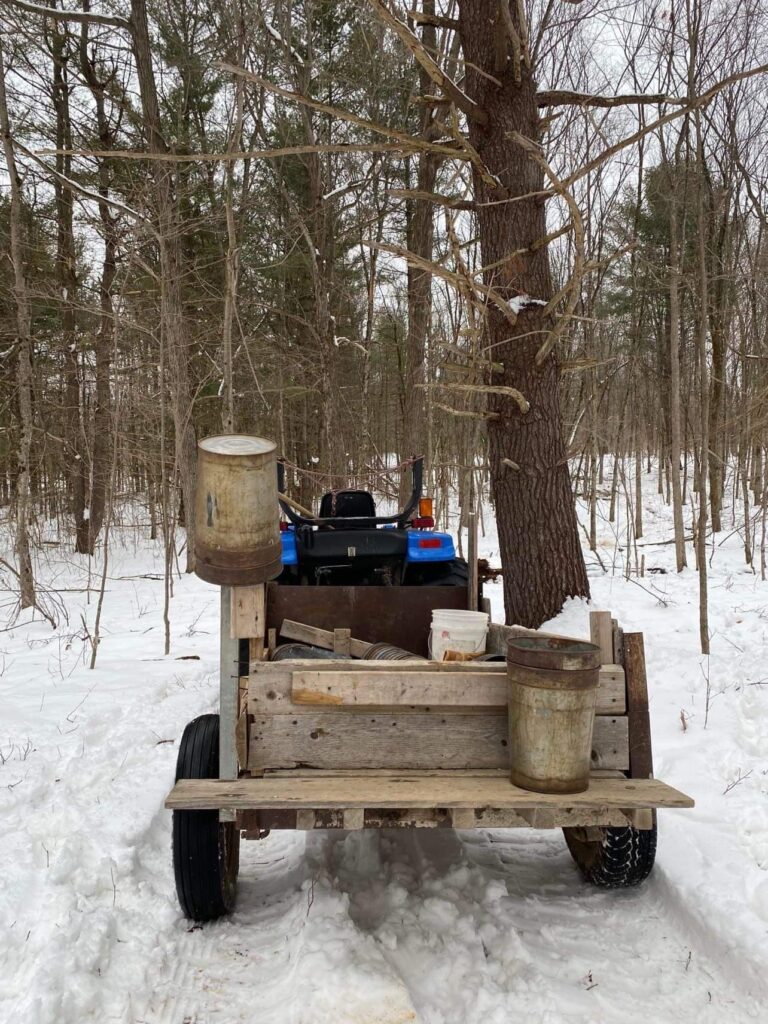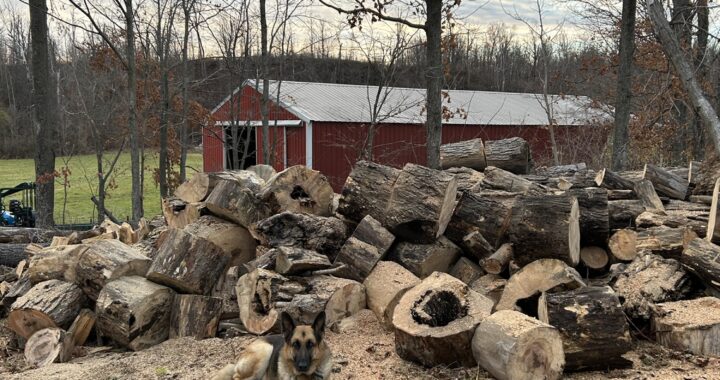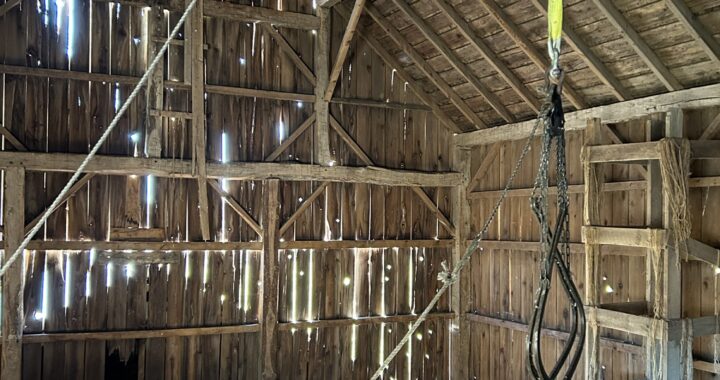November moves ahead and the weather has been great! Warmer then usual and mostly dry. I have been busy at the farm property preparing for winter. Bush hogging the fallow meadows and preparing to fill a firewood order. I got my neighbor’s old Ford 3400 fixed a couple days ago. We use its three point hitch wood splitter up on the warehouse landing since our Troybilt wood splitter blew its hydraulic cylinder last fall. But firewood wasn’t center stage yesterday. Moving round bales was the task of the day.
I spent yesterday moving the round bales my Uncles had left for me when they cut the hay this summer into the old barn where I store them. It’s a huge structure and its mows hold a lot of hay. In the 1970’s we packed it with over three thousand square bales. There was room in the center area between the mows to store two hay wagons that were piggy backed one on top of the other. That was a challenging task but my father was clever and had devised a safe strategy for accomplishing it each autumn. Kept inside the wooden hay racks of the wagons wouldn’t rot away in the elements. My father liked to keep all the machinery under cover. It made a huge difference to its longevity. Most of our equipment was used to begin with and I call it “tired iron” these days. I wrote of it once. But today’s post is more about the old barn itself.
When I was a boy we housed our cattle and horses in the lower section of the barn.My father did a lot of work converting the barn over into a more modern functioning space. A gutter cleaner was added in the 1970s and a back addition was built to house more livestock. His system worked well to weather the brutally cold winter months. The stored bales in the mows were thrown down wooden chutes known as feed holes. They had sliding wooden doors to help keep the heat in the lower barn where the livestock dwelled from mid November until mid May. The livestock generated huge amounts of body heat and a barn fan with a thermostat controlled the inner space of the lower barn. There was a lot of work involved in keeping the animals fed and their manure removed each day. It’s how I spent a lot of my time as a boy. I liked it most of the time though. It’s a story that I plan to explain in greater detail sometime.
These days I mainly use the stable sections of the barn for storage. It’s gotten rather messy unfortunately. I tried storing firewood in there once but it was much too damp so I abandoned the idea soon after. The timbers in the lower section have been riddled by powder post beetles over the years and need to be replaced. The barn builders made the stable section low so it would heat easier. It’s not a space conducive to being used as a garage ideally. It was designed for livestock. So in our capacity it has limited potential.A plan has been perking in my brain for years about how best to utilize the barn to its fullest possible useful space. We have an idea!
I store most of the round bales in the upper hay mow in the center aisle. Most years there is a surplus of hay left over and we occasionally have some to sell. That’s what we are hoping to do next spring. I got a few bales into the upper hay mow yesterday but quickly ran out of space since it was already quite full still from the previous year. We hadn’t sold any recently. Having reserve hay stored inside is never a bad thing. A wet summer makes it in high demand sometimes. It will last several years when kept dry before losing its freshness. I often marvel at how green a bale of hay appears when feeding it over winter snow! My father had pointed that out many years and it still amazes me with its simple truth. The upper section of the barn stays super dry so it’s a fabulous storage area for more then just hay. I keep some lumber there as well.
If you have ever seen the upper section of a barn then you can probably picture mine. The upper hay mows are huge and the roof peak towers far overhead. The barn was built sometime in the late 1800’s or early 1900’s near as we can tell. My father told me that the original barn that had been on the property had been destroyed by fire accidentally by a young girl. Her parents were sheep farmers and their last name was Howe. I hope to research them sometime and learn more about them. Someone had vision and designed the present barn. It was built when the timber framers still utilized huge hand hewn timbers for the main bents and cross support members. The rafters of our barn were sawn on a sawmill so that dates them to the period we surmise. The reason the mows are so high also dates the barn’s age. It was erected in a time when hay was still put up loose. Balers were not around or were still in early stages of development. There was a track and bale hook system installed just under the peak that was used to get the hay placed into the mows. My father repaired ours and we used it to place round bales for several years. It really put it to the test though as the bales weighed in around 500 pounds. It worked well though but required a team effort to accomplish the task. It’s rope pulley system was powered by a tractor hitched to the main tether. The bales started out in the center aisle just below the trolley which was situated some 25 feet plus above. We had to manually pull the hay hooks down from the trolley and set the hooks into the bale each time we hoisted one. The bales were hoisted by the tractor driving out from the center aisle tightening the rope through the pulley system. This section of a hay mow is often called “ the driveway”. A second rope operated from up in the mow tripped the travel hoist. A third was used to dump the hay hooks. The whole process required focus and timing. I came up with a different system of loading the mows when I was raising beef cattle. I used planks and gravity rolling to load the side mows from the center aisle. This I could do alone. It worked well. Hopefully you can picture the process at this point. Check out the featured image of this post carefully. It shows the hook system partially and will perhaps clarify the apparatus better.
I have spent a lot of time working in the hay mows of our barn over the years and have always admired the framework. The timber framed bents are massive and must have been challenging to place without a crane. If you don’t know anything about timber framing a bent is an assembled structural framework mortise and tenoned together with wooden pins that were hand carved mostly out of hardwood. The bents were assembled on the flat deck of the lower barn structure that had been built first. Talk about a team effort! An assembled bent was very heavy and the joinery needed to be precisely measured to match up. It took skill and experience most certainly. The framers used hemlock for most of the upper structure. I will come back to that shortly. But first a few words about hemlock.
Hemlock. A conifer. It had many uses here in the northeast. It was used by tanneries for its tannic acid properties. It’s still abundant in the Adirondacks but under attack by an invasive species. Different story to share sometime. It’s a strong wood that’s considered a softwood actually. Easier to work into joinery but very heavy. Once our area was heavily forested with hemlock. It was a prized building lumber and most of the forests were cut down here in the St. Lawrence valley. We have no hemlock remaining on our farm property. It only remains in the barn and sheds of the farm now. In the 90’s there was one massive hemlock on our property. It had escaped being cut for some reason. Perhaps the builders had left it to reseed the forest but that hadn’t happened. It died suddenly and we cut it to salvage it. We had expected it to be hollow or a “shake” hemlock. Shake hemlock is the result of wind damage. When sawn it falls apart in the growth rings.Very common to that species. My father taught me how to identify shake logs in case I ever wanted to buy any hemlock. In a shake hemlock the growth rings visible on the butt ends will be gray or black. I learned to read a hemlock log although we seldom got to see many before we started custom sawing with our bandsaw mill in 2006. Our salvaged log surprised us when it’s 36 inch diameter was flawless. We turned it into some wonderful lumber on our mill. Great memories of time learning and working with my father.
The haymows and the upper barn itself were constructed using four bents. There are no cross members connecting the span of the haymows in the center. Instead the framers used four smaller width bents on either side of the haymow driveway. Very cleverly connected with ladders built in two spots. The open design of the center area allowed the hay to be placed with less restrictions. Our barn is very unique in several ways that I haven’t always seen in other barns. The framer’s didn’t utilize queen posts supported by main rafters which in turn would support the secondary rafters. Instead they used one long main rafter on each side using fairly large hand hewn timbers. This design saved time and materials as there was less joinery. They did sacrifice some overall strength I feel with their frugalness. The main rafters appear to be basswood instead of hemlock which isn’t as strong. They have sagged a tiny bit over the years probably due to snow load when the barn was roofed with asphalt shingles. The original roof was cedar shingles. It appears that there are three layers of shingles. One cedar and two asphalt. My father had a metal roof installed by the Amish shortly before his death. I didn’t care for the pitch and height of the roof so declined doing it. The metal roof sheds itself of snow quite readily so snow load is no longer a concern. It comes off like an avalanche on a sunny day! As for my critique of the rafters who am I to judge the framers? What they constructed has stood for over 100 years! Modern barns blow down and collapse all the time these days. The men who stood on those lofty perches and assembled the roof structure were some brave individuals! I wish I had some photos of the build! A frolic the Amish call a barn building when they join together and work on one. It must have quite an undertaking! For some reason the framers did not leave their initials or a date on the walls of our barn. It was a common practice back then. Maybe they didn’t have any of the black ink they typically used. Year’s ago in my custom designed office space in the farmhouse I had a hand hewn post that one of the barn buildings had carved into. It was initialed and dated 1897.Lost to the fire but not my memory.
Our barn is painted red and has some sections of red metal siding. It was last painted sometime in the 90’s by some traveling barn and roof painters.The outer structure of the entire barn was constructed using sawmill sawn lumber. The girts and siding are hemlock as are the secondary rafters. The roof boards as well. The volume of lumber that makes up the barn is mind boggling. I can see why the hemlock was cleared from the land here. The farmhouse that had been constructed near the barn was made of hemlock as well. It was lost to fire in May of 2012. It’s noteworthy to mention that the two stall garage that had sat between the farmhouse and barn had been constructed of pine. It had been constructed in a time when the hemlock was not as readily available anymore. The fast growing white pine of the area was being used more frequently by the 1950’s. The garage was lost in the fire and how the barn was even spared still remains a miracle. The fire crews managed to save it though and we were thankful for that!
The lower section of the barn is a mixed construction of various species. The large mow cross timbers and plinths I suspect are elm. They were often used for that purpose due to the size they once grew here in the valley. It’s difficult to say as the lower section was whitewashed so the grain of the wood is covered. A drill bit could quickly solve that question. The barn builders used timbers called 3/4 rounds to support the haymow floor system. Trees that were flattened on one side only and fitted onto the tops of base top plates on one side. The other end of the 3/4 rounds were set on the top of the cross members. Many of the 3/4 rounds are basswood and the powder post beetles have riddled them extensively. The barn builders left the bark on them unfortunately. It made them more susceptible to the powder post beetles. Some have needed to be replaced. More are in jeopardy of collapse now. It’s important to note that hemlock is not as susceptible to being attacked by powder post beetles for some reason. Hardwood and most other wood seem to attract their destructive habits. The lower section of the barn is still strongly functioning however. The main frame remains sturdy for now. The framing under the haymow driveway is very substantial. It was designed to carry a lot of weight. It will support the weight of tractor and all the bales that I stack on top of it. The barn was built into a side hill to make access to the haymow driveway easier. Also a clever design of the builders and very common to this hilly area. A large stonewall supports the framework of the east side of the barn. We even have an old concrete silo that is 30 feet high. It hasn’t been used in decades except by the pidgins who like to live there. We have to periodically shoot them when they try to invade the haymow. Their droppings are destructive to the hay and sometimes carry diseases.They quickly learn that they are not welcome and fly off to new places.
I have never measured the barn or calculated it’s square footage. There’s a lot of wasted space that has potential to serve a better purpose I feel since we don’t raise livestock anymore. I have often wondered if the old barn could be renovated into a large house after the farmhouse burned. It would be a monumental task of some magnitude. The lower section especially. But what is to become of it otherwise? Since the creation of MOONTABS Creative Expression in 2020 I have pondered it more frequently. Since the sale of Hill House even more frequently. The peaceful setting of the farm is a writer’s ultimate sanctuary. I can envision something when I gaze up into the sturdy framework of the haymows. Where better to write the stories of rural heritage? What better place to leave a legacy? Imagination can overstep the boundaries sometimes. And the budget! But there is a building already standing that could be turned into something grand. Rustic and totally country. I could have the large library I always wanted. I could dedicate a space for my collections of things. The Hoarder Museum I would call it. There’s an even larger plan that I won’t share just yet. We have our sawmill to customize the build out. We have skilled Amish barn builders close by. Heating it would present some challenges that’s for sure. Some of it might require winterizing. The demo process alone is intimidating but totally feasible with time and effort. The biggest challenge besides money is dedicating the time to achieve the goal. Its a planner moment of many aspects and decisions. A series of phases and deadlines. Hmmm… sounds familiar after close to 40 years on construction projects. Zane has expressed some interest in the project but it’s hard to say where he will want to fit in. But it all comes back to the basic structure itself in the end. A standing building with wonderful potential. It’s exciting.Daunting. Crazy. Overwhelming… need I continue? It’s connected to the MOONTABS vision somehow. A fresh start at the farm property possibly. I will keep you posted on our progress! Or lack of it be that the case.
It’s funny the things that show themselves as time passes. Just this week I drove down a road I rarely travel anymore. Years ago there were seven active dairy farms along it. Nice barns and decent homes. I was shocked at the change that time has brought to the property along the road. It’s got an almost post apocalyptic look about it now. Barns fallen in or gone entirely. Houses gone. Replaced by trailers and campers in various condition. Someone continues to cut some of the hay fields fortunately. There is only one actual active farm and it’s not a dairy farm anymore. The scene gave me cause for reflection when I reached my own farm property. No house and no longer an active farm. No dairy since the late 50’s. Most but not all of the hay cut. Rural upstate has changed immensely. I looked at our barn and seriously began to consider its future fate. The farm as well. The barn dream has begun to take on a new meaning since that drive Tuesday. That’s what prompted this story.It’s up to me now to make wise decisions and bring the farm property forward into the future. Its not too late to set a plan into motion.Someone once stood in the forest that once blanketed the land of the farm. They found the artesian well in the main meadow no doubt. They decided that this was the spot to homestead. How many generations worked to clear and improve the land? Picking rocks and piling them where they still lay today. Setting clay tiles and draining the swampy sections. Building a home for their family and living close to the land. As for the barn itself? One can only guess at the cost at building it in those long past days. One can only guess at the manual labor it took. I sometimes try to imagine what the land must have looked like in those days when stands of hemlock stood tall and sturdy on the rocky slopes of the farm. I try to imagine someone standing where the barn now sits and designing the build. It was someone’s dream once to make it happen. To build something that would last. To make a better life for themselves and their family. I think I know how that might of felt. I feel that too when I stand in the meadow by the barn and try to plan for the future. It’s hard to say what happens next. Maybe the answer will show itself to me today. Maybe it already did.✍️
